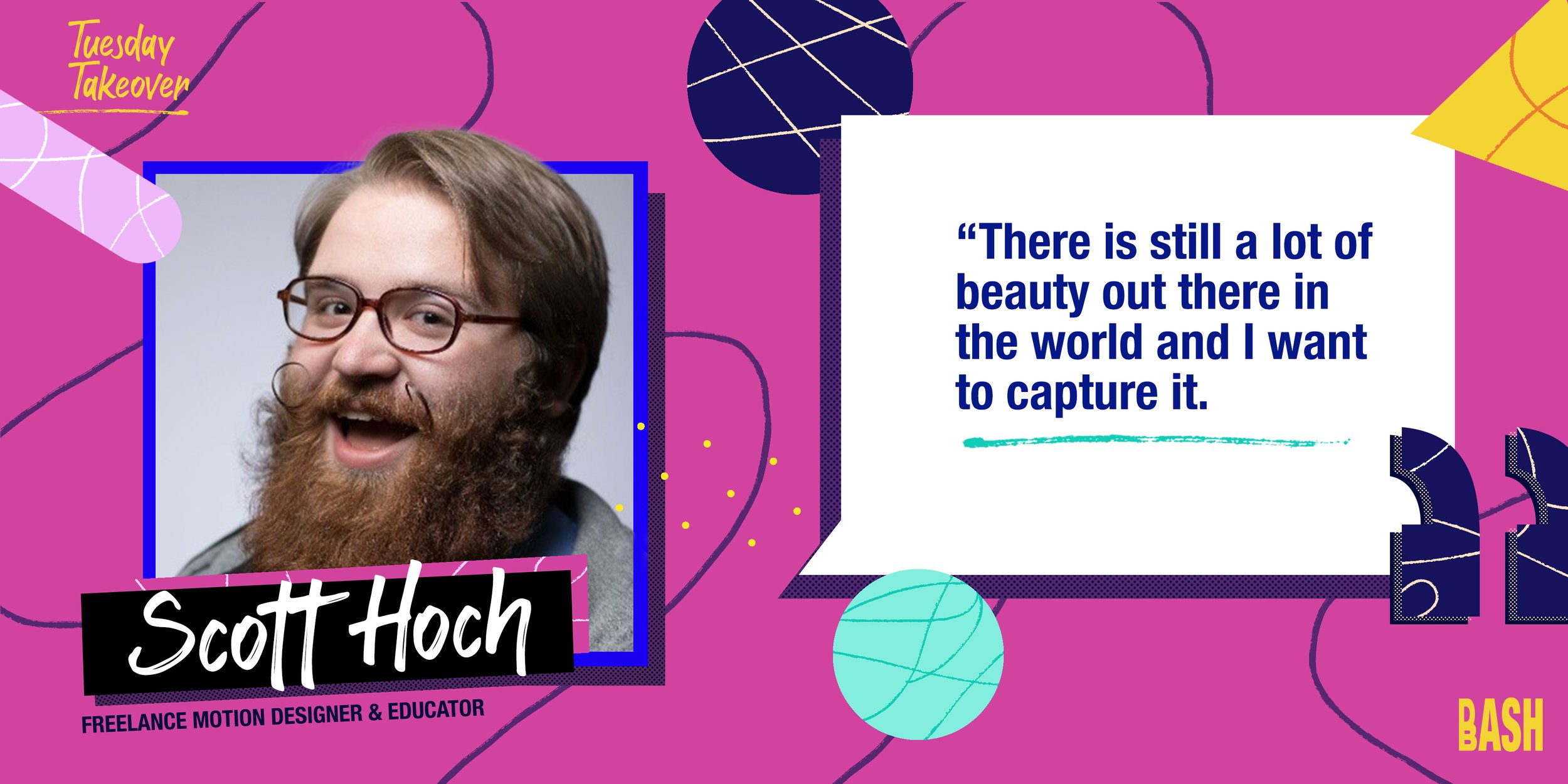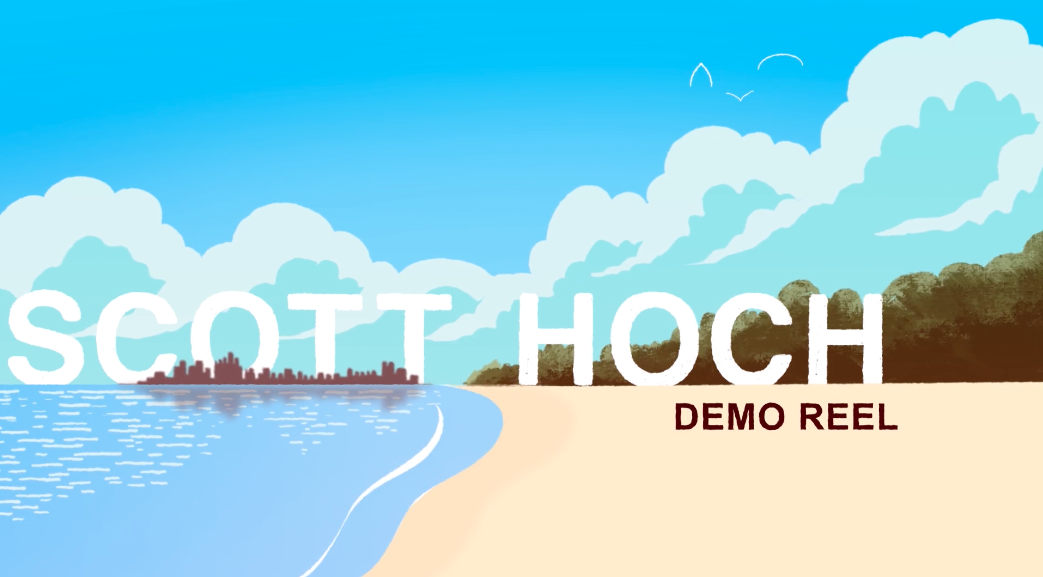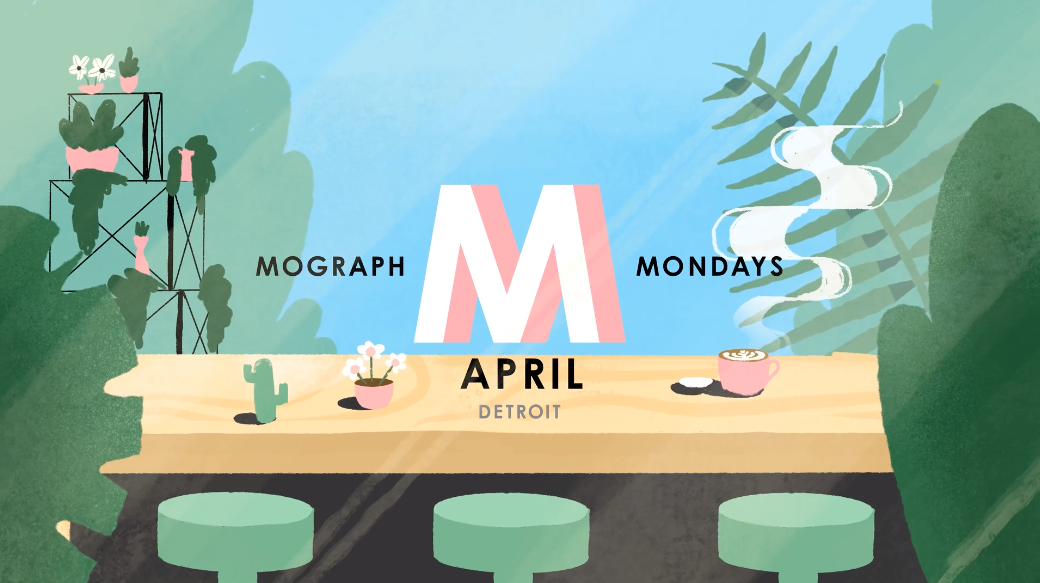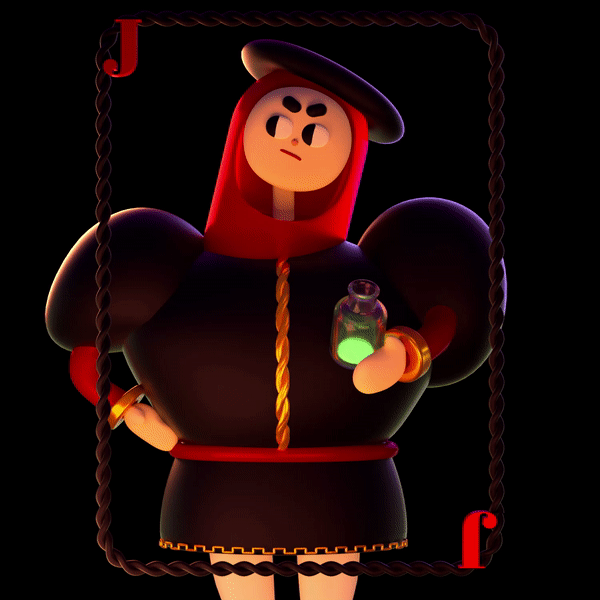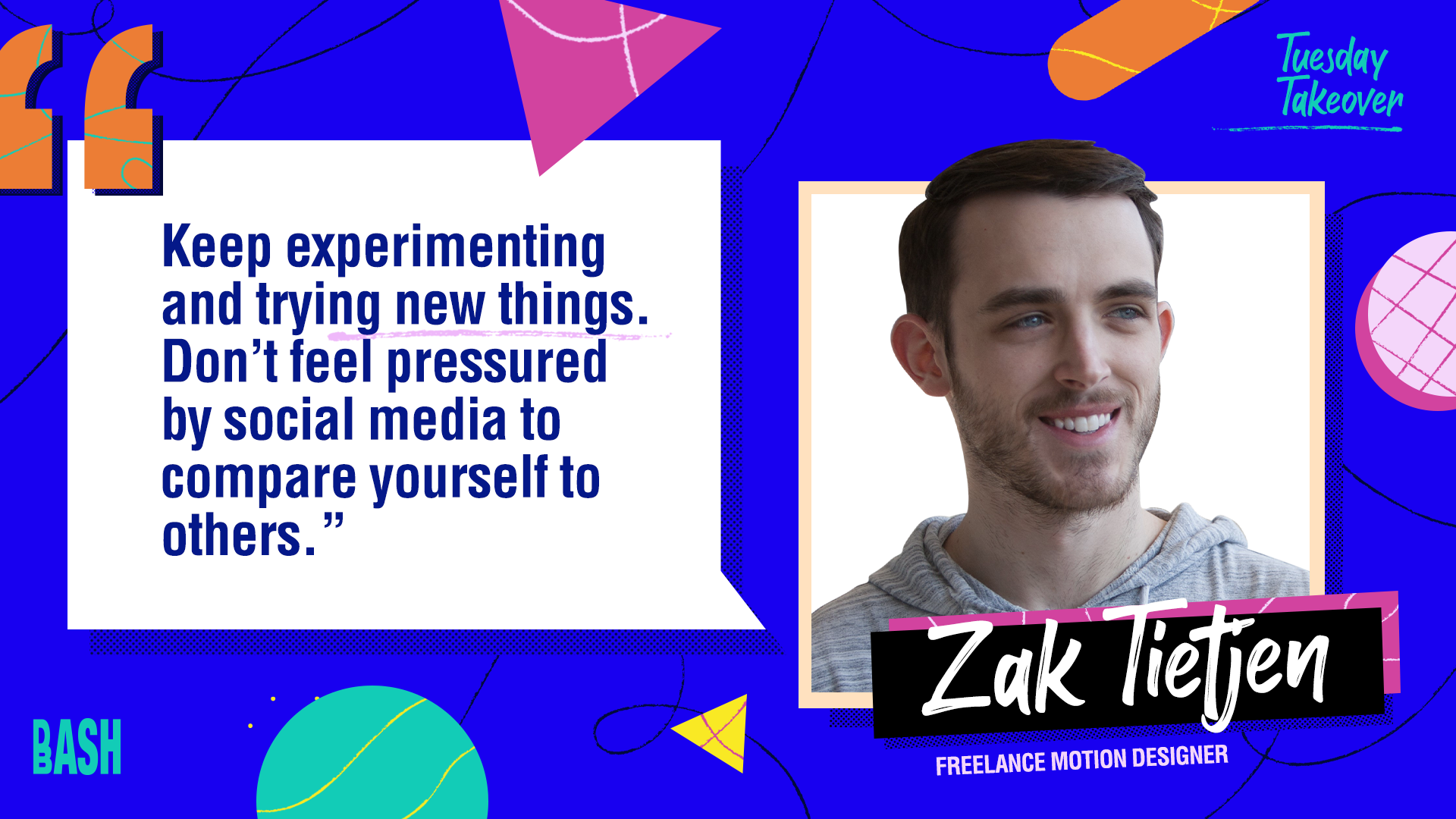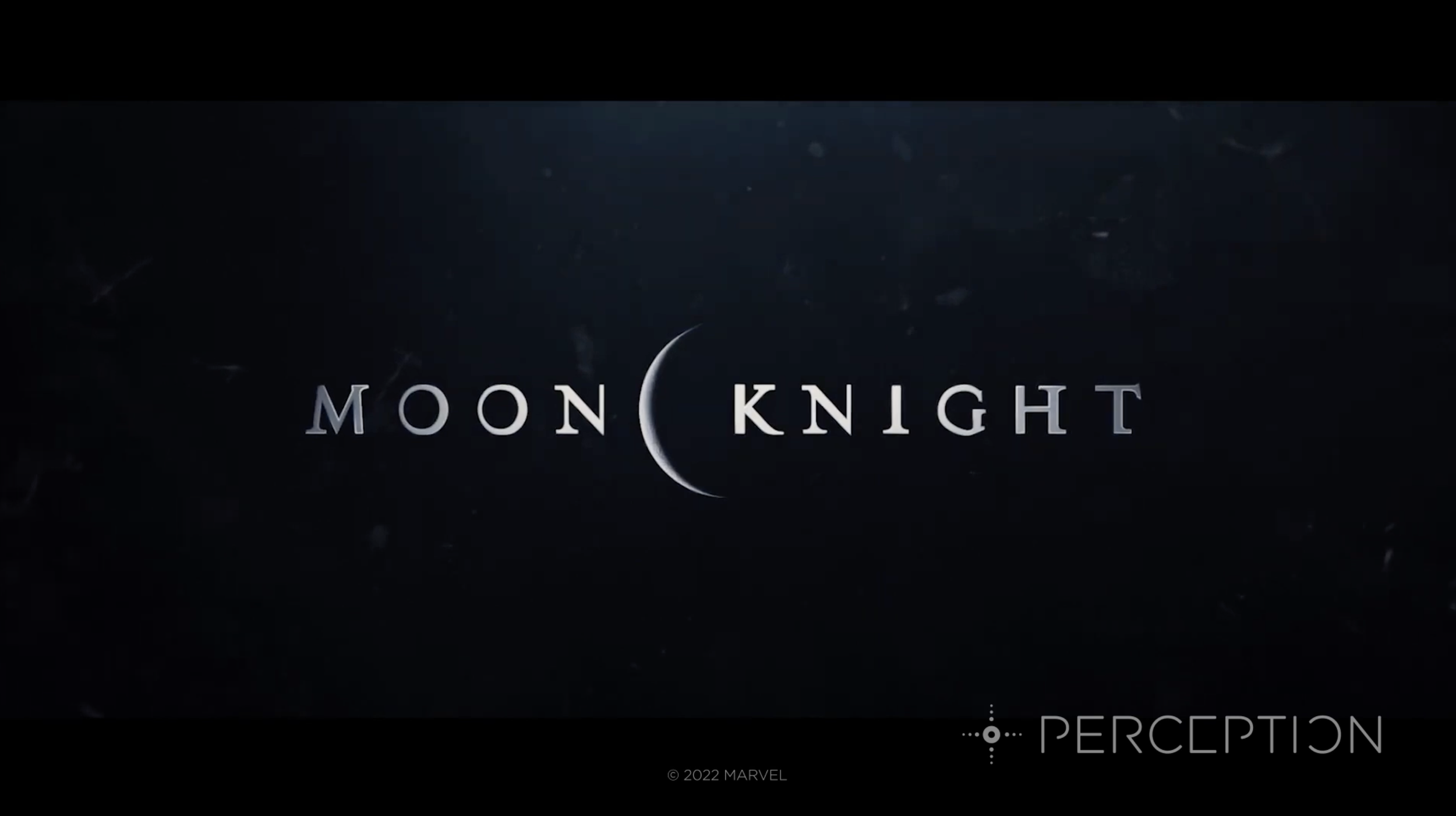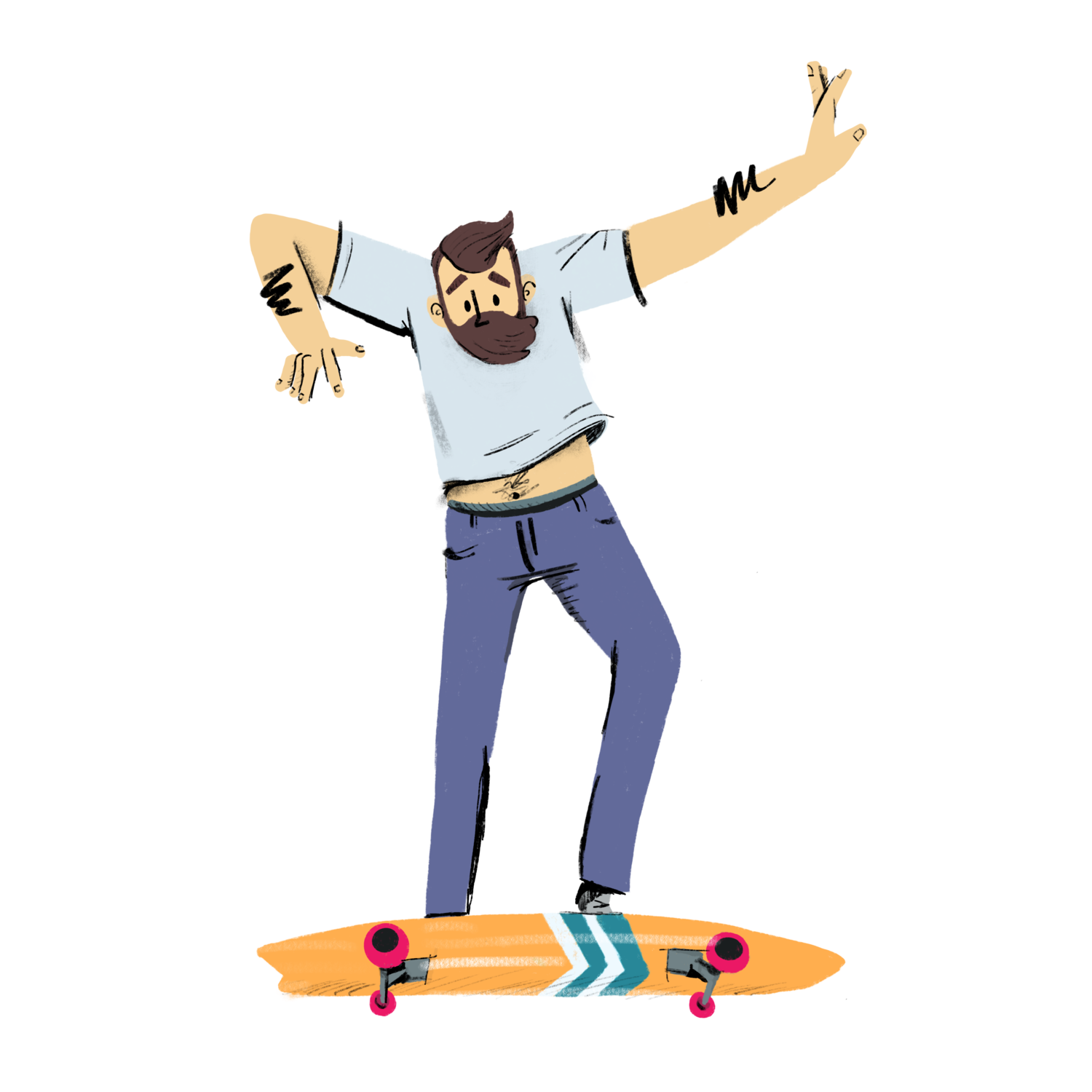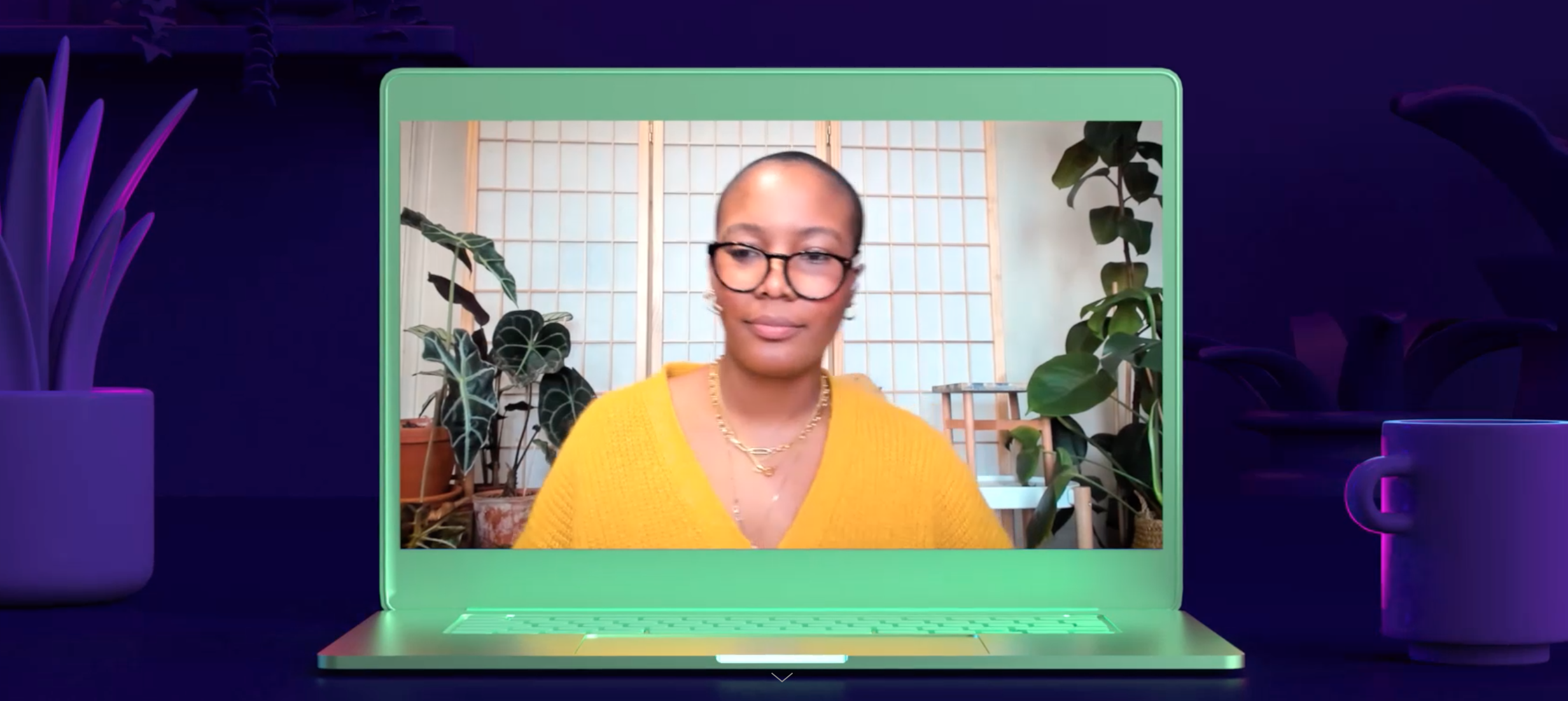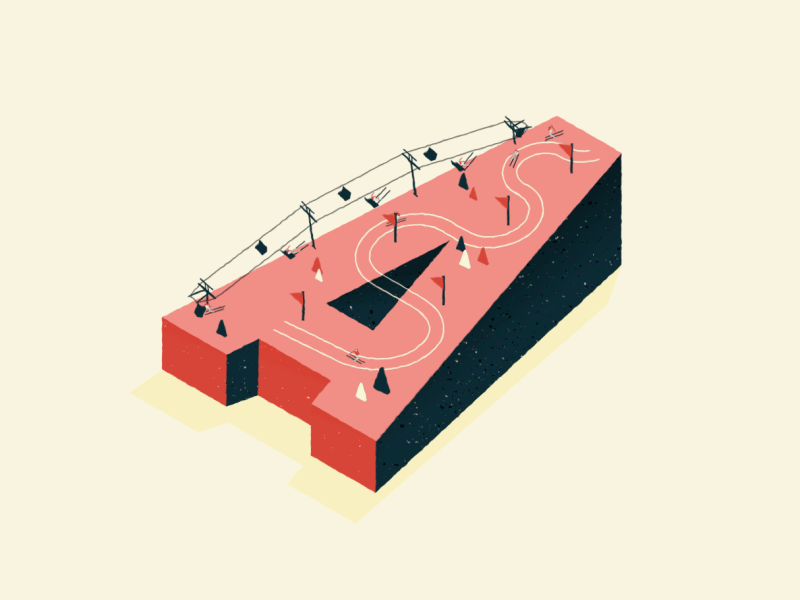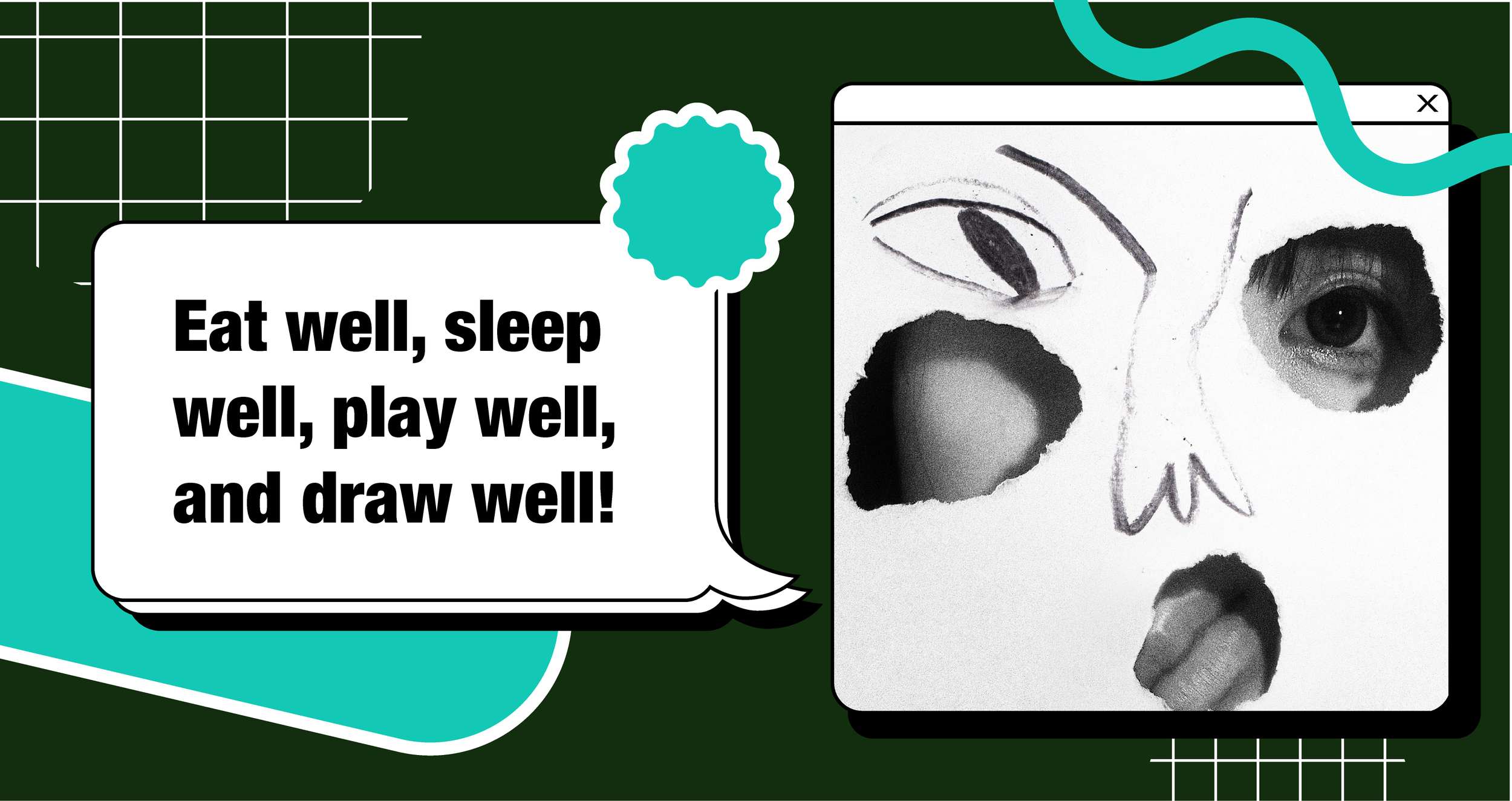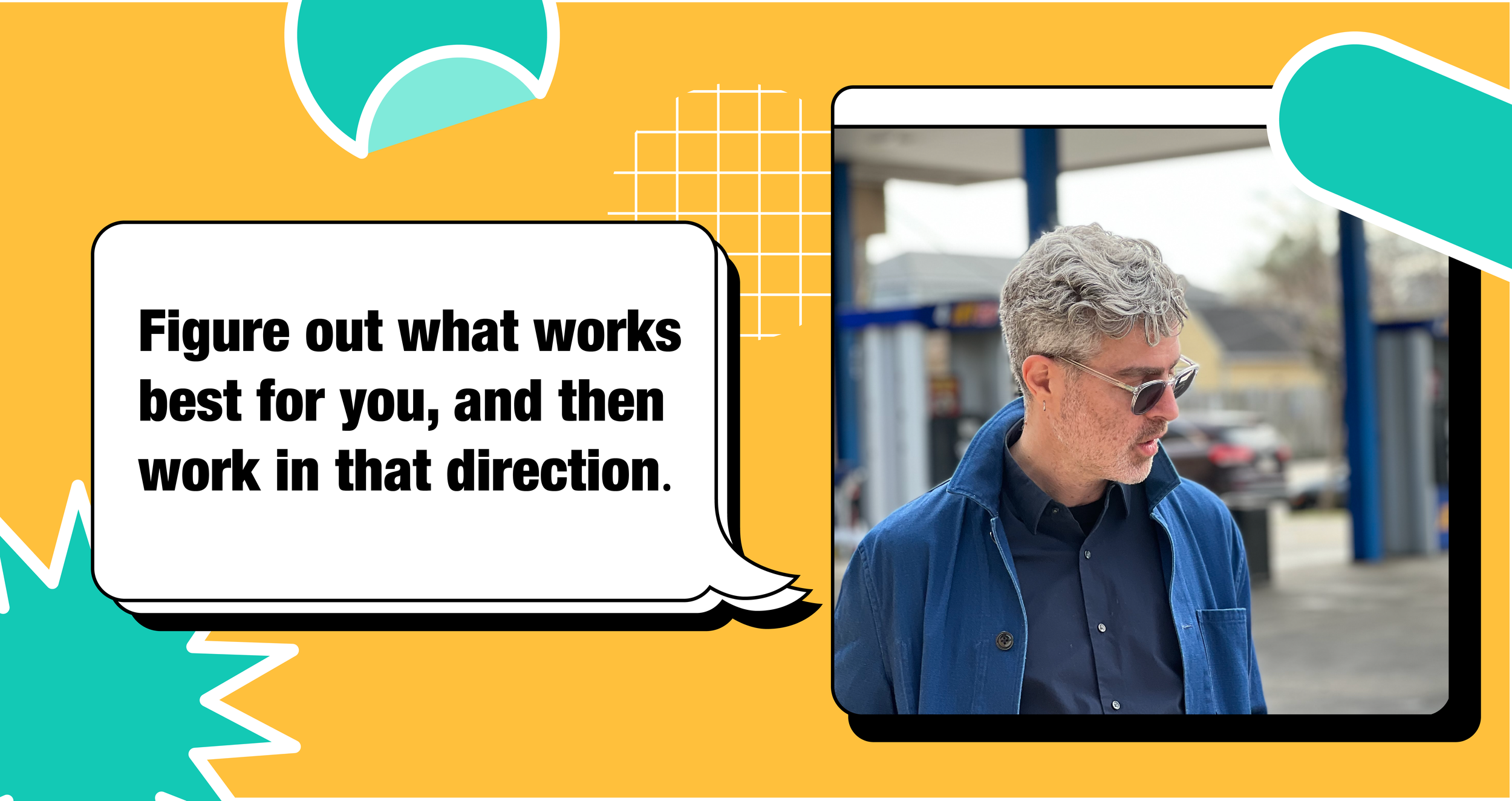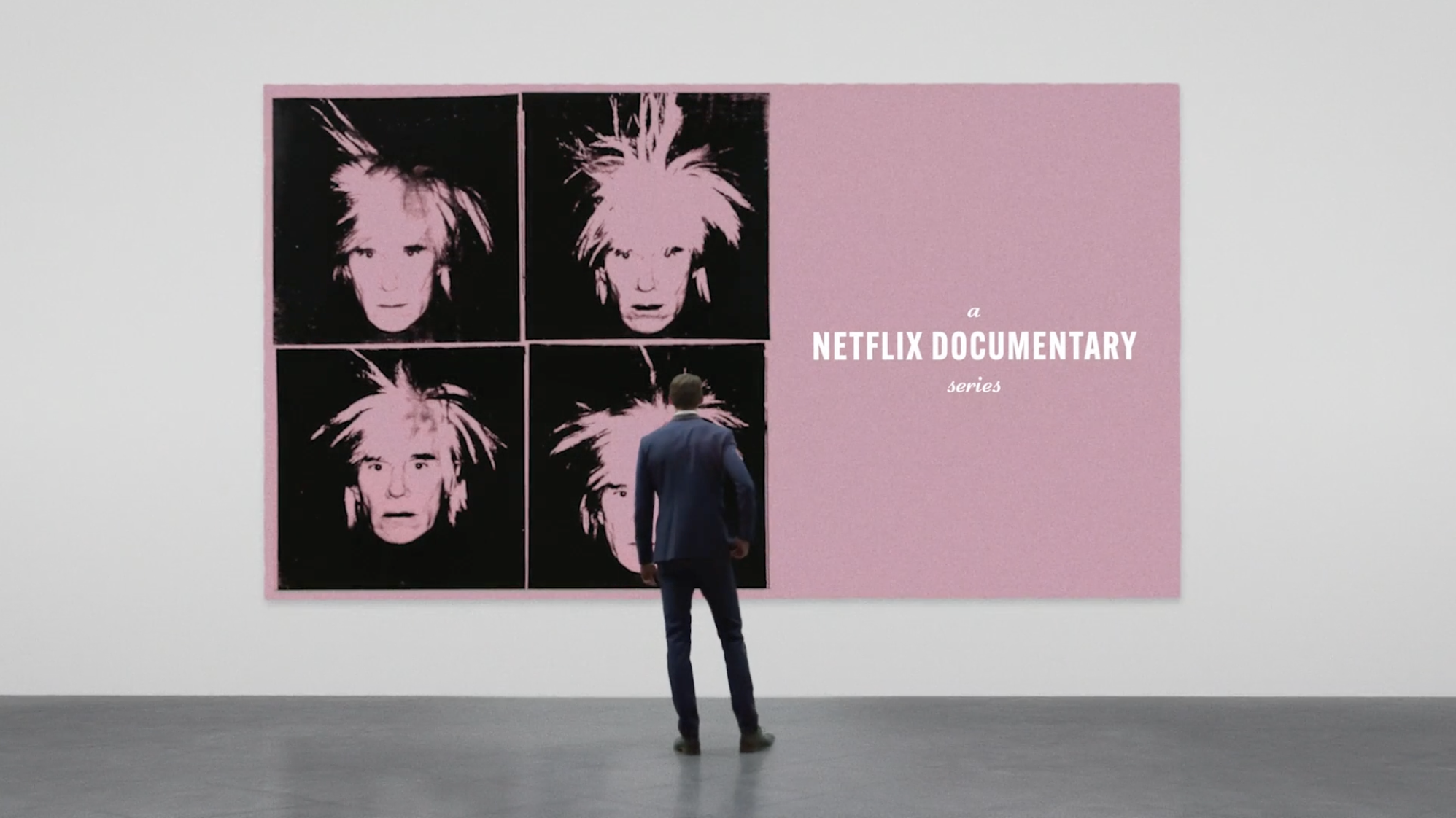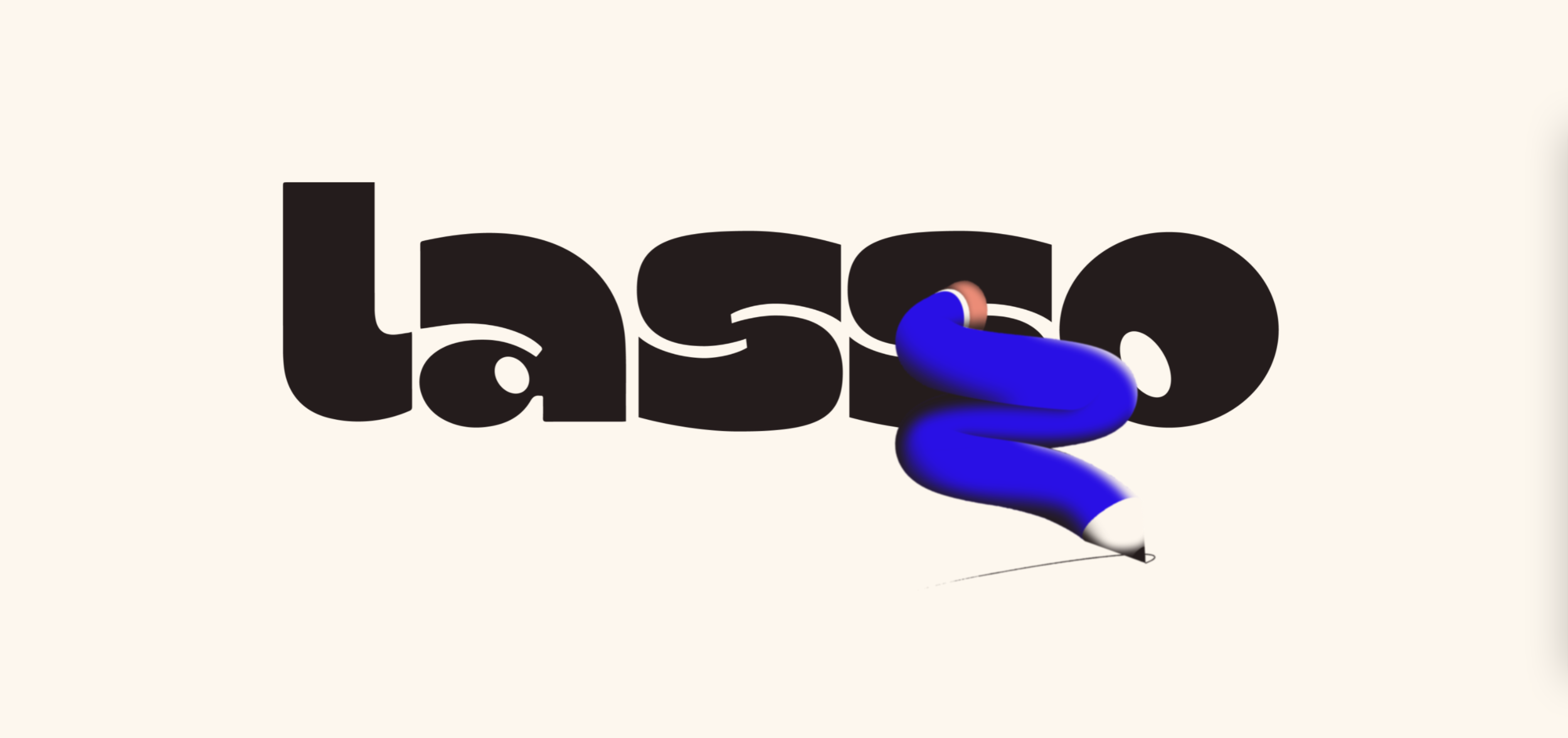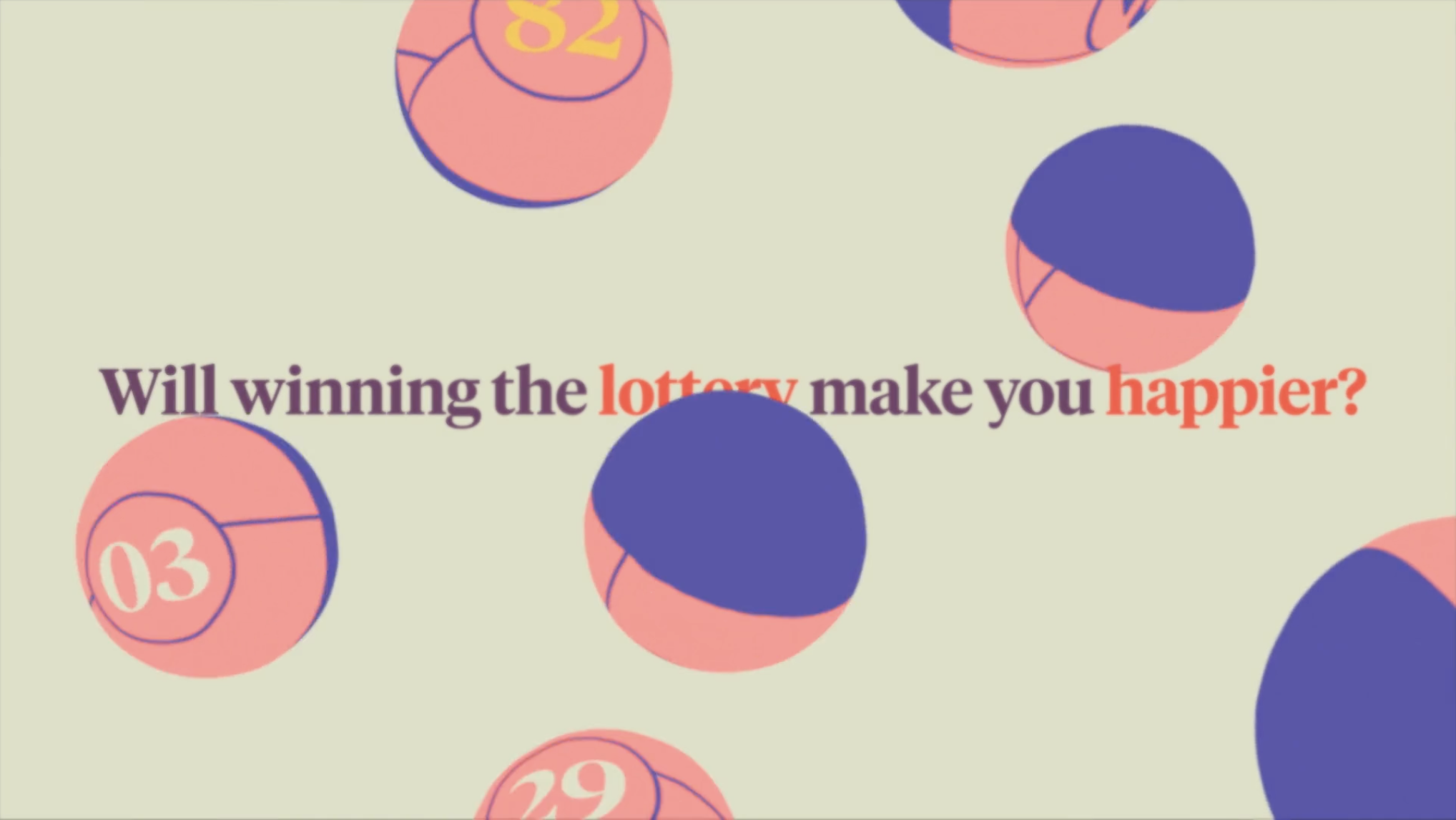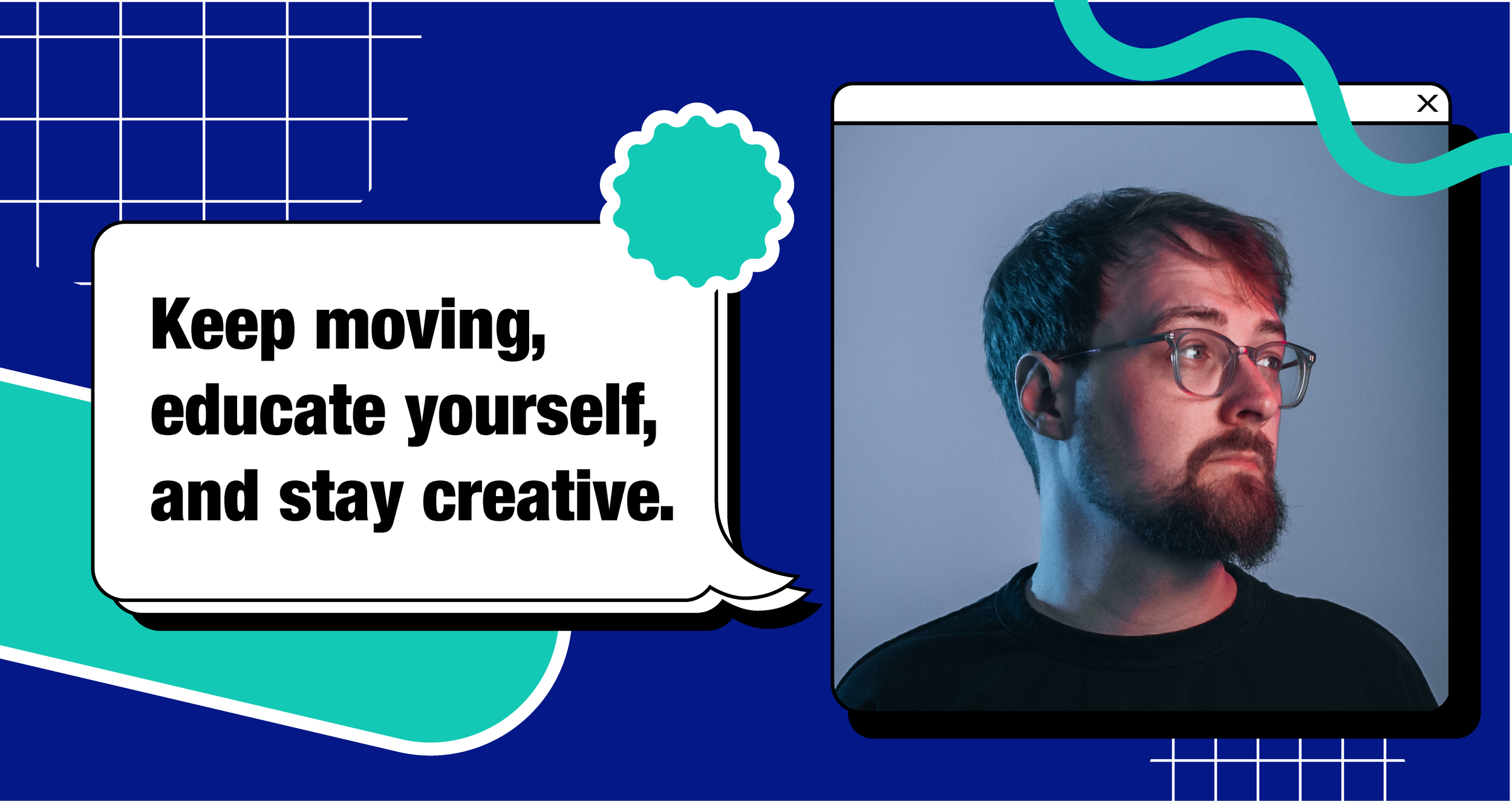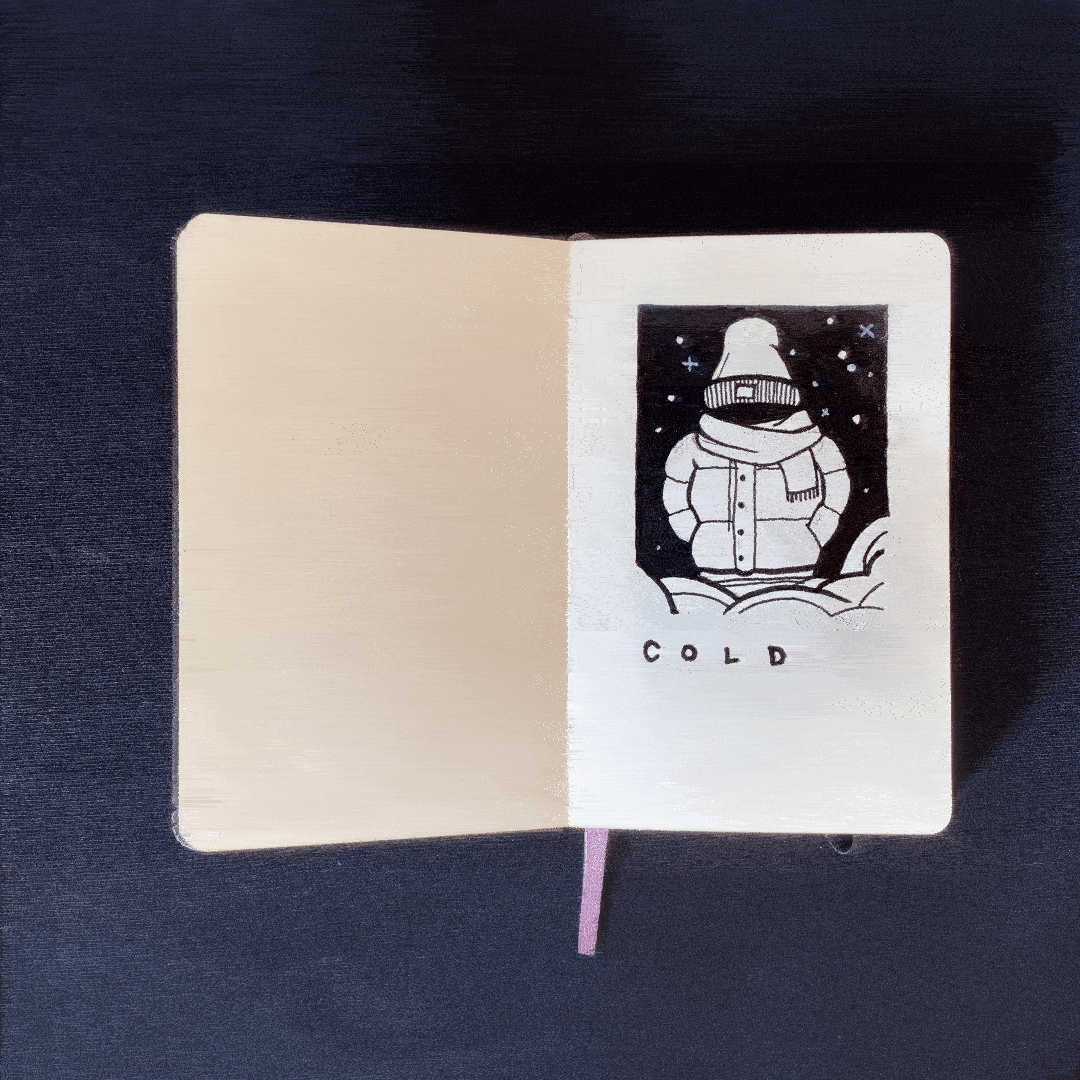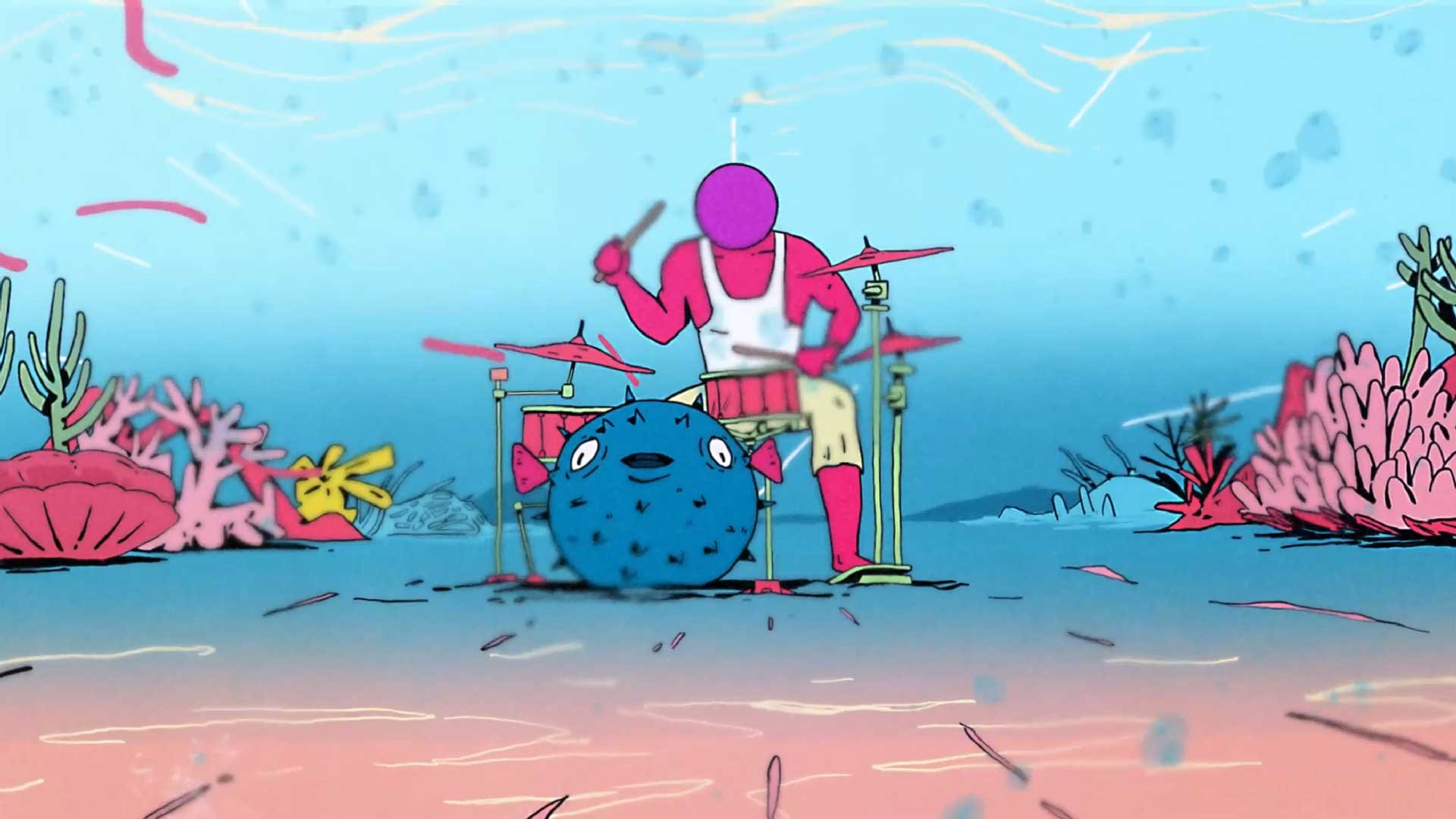Takeover Tuesday Vanessa Appleby
An interview with Vanessa Appleby: an art/animation director who straddles the divide between motion design and traditional character animation.
Q&A with Vanessa Appleby.
Read time: 5min
Bella Alfonsi:
Hi, Vanessa! Thanks so much for joining us for Takeover Tuesday. For those who are unfamiliar with you or your work, please give us a lil' intro!
Vanessa Appleby:
Hi! I'm an art/animation director who straddles the divide between motion design and traditional character animation. I've been in the business for almost 15 years now, and I've had a chance to try on lots of hats over the years.
Bella Alfonsi:
How did your career begin? Did you always know you wanted to be in this field?
Vanessa Appleby:
I did not! I've always been a bit of a renaissance woman. I have a lot of varied interests.
In high school, I started drawing caricatures at a local amusement park. I think this is probably the most influential experience of my youth. It taught me a lot about life, but most importantly, it taught me that I could make money with my art. Funnily enough, I still have friends from this time working in the NYC animation industry today.
When I entered college, I had narrowed down my career path to fashion design or animation (odd, I know), so I chose a school that had strong programs for both. I ultimately decided on animation for what I thought was a shallow reason, but turns out was actually a smart one. I liked the people who were going into the animation major much more than I liked the fashion design students. They were funny, and I love to laugh.
I started my career working as a 2d cel animator in Flash, mostly working on childrens' TV. Over the years I transitioned to AE character animation, which led to compositing, which led to commercial motion design, which led to art directing, which led to now. It's been a wild ride.
Bella Alfonsi:
On your website you explain how out of every job you’ve done, directing is by far your favorite. Why is that?
Vanessa Appleby:
The short answer? I like making a plan and executing the plan. That's easiest to do when you're the director ;)
I also love finding out what my team is passionate about and delegating those tasks appropriately. I want to foster a sense of excitement for everyone who works on my projects. It makes the outcome so much stronger.
Bella Alfonsi:
Do you have any advice for someone trying to become a director themselves?
Vanessa Appleby:
You'll have to pay your dues in the industry before people start trusting you to direct. Be patient, keep trying, and don't be afraid to take on a lower paying gig if you get to run the show. You're not going to get to start directing at one of the big studios right out of the gate. Try working directly with clients (think music videos for example) to get some directed spots under your belt. Once people see what you can do when you're in charge, opportunities will come knocking.
Bella Alfonsi:
You’ve worked with a ton of different art styles over the years. Do you have a favorite?
Vanessa Appleby:
Nope! I'm ADHD and have always loved experimenting in different mediums and styles. I like to push myself and create something unique. I do especially enjoy vector workflows, but that's not exactly a style per se.
Bella Alfonsi:
Your personal illustrations are so colorful and full of life. I think that although each piece is unique from one another, it is still evident that you created all of them. What insight would you give to someone trying to find their “style”?
Vanessa Appleby:
Ha! I may be the worst person to ask. To be honest, having a "style" has always been a point of contention I've internally wrestled with.
In our business, popular looks/styles come and go. A director who has the current "it" look may not have a long lasting career unless they are able to adapt and change with the times. I wanted to be in this business for the long haul, and being as diverse as possible was key for that. I think no matter what, your hand will always shine through even though you're trying to emulate a different look. Your hand will give you cohesion even if your brain is trying to avoid that.
Bella Alfonsi:
Where do you find inspiration when starting a project from scratch?
Vanessa Appleby:
Everywhere! I go on long walks through the city and often see funny and inspiring things. I'm also a history dork, so I tend to find inspiration from decorative arts and pattern motifs of the past. Most recently I became obsessed with Medieval illuminated manuscripts and scoured thousands of pages collecting funny marginalia creatures. Explore your passions outside of art. Inspiration can come from anywhere.
Bella Alfonsi:
As someone with 15 years of experience, what do you think the future of motion design looks like? And how is it different now from when you first started out?
Vanessa Appleby:
Motion design is already so different from how it was when I started. The biggest shift I've seen is an uptick in women in the field. Between 2008 - 2015 I was usually the only female on a team. This boggled my mind since my degree program was predominantly women.
Despite this, there were, and still are unfortunately, not many women at the top. I do think with the advent of groups like Panimation that things are beginning to change even more. I just hope it keeps going and the industry becomes even more diverse and inclusive.
Bella Alfonsi:
What is your proudest moment in your career thus far?
Vanessa Appleby:
This is a tough one- I kind of hope it's still to come!
Bella Alfonsi:
Any final takeaways?
Vanessa Appleby:
Keep going! This business can be tough, especially when you're just starting out. If what you're doing isn't getting you the results you want in your career, try a different approach. We're creative people. Don't be afraid to apply that creativity to how you grow your career or earn your money.
Takeover Tuesday Scott Hoch
An interview with Scott Hoch: a freelance motion designer from Detroit, Michigan.
Q&A with Scott Hoch.
Read time: 5min
Matea Losenegger:
Hi Scott! Can you introduce yourself and explain what you do?
Scott Hoch:
Howdy! Thanks for having me, I’m stoked to be here. My name is Scott, I’m a freelance motion designer from Detroit, Michigan. I also teach digital animation part time at my alma mater, College for Creative Studies (CCS). I like birds, movies, coffee, and making pixels move on screens. Lately I’ve been really thinking about my identity as an artist and where I want to go from here. It’s the beginning of the year so it’s a time of self reflection. I'd say you reaching out to me was good timing because I wanna talk about it!
Matea Losenegger:
What sparked your interest in design and animation?
Scott Hoch:
As long as I can remember I’ve loved drawing and making people smile. I drew all through elementary school, designed t-shirts for my friends' screamo bands in high school, and after that I got an animation degree from CCS. My ambitions were never really focused, I only knew I wanted to do creative work, make a decent living, and make others happy. At one point in college I MAYBE thought I could move to LA, work in TV or feature animation as an artist. Maybe even direct movies. It turns out LA is super competitive and the housing market is a complete joke. If I didn't get a job after graduation I'd be completely screwed but I did not want to move across the country away from my family to MAYBE get a job that hardly covers rent not to mention my debt. I needed to find a different path.
It was around this time that I was introduced to both After Effects and the Detroit Mograph community. Not only was I hooked on this program that could seemingly make magic happen at the push of a button; there was a whole industry outside my front door welcoming me with open arms. There really is something special about a bunch of Midwestern nerds all into the same nerdy shit as you. I instantly felt like I belonged. Soon after I graduated I got an internship as a motion designer for a mortgage company where I learned the ins and outs of the studio system. Two years later, Julie Craft convinced me (and the rest of Boxfort basically) to quit my job and go freelance.
I'm so happy that I didn't have to move away from home to be an animator. Detroit has such a unique identity that is a part of me; I don't know if I’d fit in anywhere else. It’s the perfect sized city, not too big, not too small and there’s lots of nature in the area too! There are so many more artists and creative folks here than anyone would guess because that part isn’t talked about nearly as much in the news. Heck, I didn’t even know it until I was in college. I love Detroit, I could go all day but I’ll leave it at that. Come visit!
Matea Losenegger:
What’s it like being a part of an animation collective like Boxfort and how often do you all get to collaborate?
Scott Hoch:
It’s the BEST! At its core Boxfort is just a coworking space that a group of friends share so we don’t go crazy working from home all the time. Though, to be honest, I only go in a few times a week. One of my goals this year is to go more often regardless of if I’m booked or not. It’s a wonderful space with cool vibes, hacky sack, movie nights and, yes, there is LaCroix in the fridge. As far as collaboration we all work on such different projects it’s not common that we collaborate on client projects. Sometimes 2 or 3 of us can work together on a larger project but we’ve never truly staffed up to work on a big campaign like a studio would. I think we all prefer being independent. I also think we prefer putting our collaborative potential into short films and music videos. Deep down we’re all storytellers and we love working together to make our ideas a reality. I know all of us at Boxfort are itching to produce more shorts this year so stay tuned!
Matea Losenegger:
You have a slick, succinct reel with a strong intro and outro. What was the thought process behind it and what would you say makes a compelling reel overall?
Scott Hoch:
Maybe an obvious answer but thanks to the internet age everyone’s attention span has been completely obliterated. People can process information really really fast these days which means they can also get bored really fast. I read somewhere that art directors will know within 15 seconds of a reel if they’re going to hire someone. I have no idea if that’s true but why risk it? The intro and outro is one of my happy places. I think everyone should keep a list of their most favorite places and memories. Whenever I have trouble drawing something I just think of clouds, trees, water, sand, lots of stuff! A lot of my art is very intuitive, my hand takes me where my heart wants to go. I love the beach, I love the way it makes me feel. When people watch my reel I want them to be sucked in by the cool ocean breeze and calm waves right before I bombard them with crazy visuals. Then as soon as the reel is really getting you amped up it’s over and we’re looking at a nice pretty wave again. You gotta ease in and ease out amirite?
Matea Losenegger:
I really love the use of color across your portfolio. What is your strategy in creating a successful palette?
Scott Hoch:
There are tons of sites that will show color palettes from different movies or from nature that you can use and I think over time I’ve gotten a better sense for making my own. Coolors.co is a really great site to generate quick palettes that work well together. I'm also fortunate to work with a lot of incredible illustrators that are much better with color than I am. Perhaps from animating their designs I've gotten better at color from osmosis. Honestly I never thought of myself as having good colors so I really appreciate you saying that!
Matea Losenegger:
Is there a particular type of project you like to work on?
Scott Hoch:
Any project where I can collaborate with kind talented people are the ones I like best. Seeing others bring their A game inspires me to do my best. It also helps when my values align with the mission of the company I’m working for. Beggars can’t be choosers in the freelance world but I definitely feel better when I believe the work I’m doing is helping people. I’ve been fortunate to provide animation services to some non profits in the area and would love to do more “good” work with the skills I have.
Matea Losenegger:
Who would be your dream client or artist to collaborate with?
Scott Hoch:
As an avid birder I would do anything to work with the National Audubon Society. Conservation is a very important cause to me and I would be over the moon if any of my work someday helps with wildlife conservation efforts. Lower down the list but still big dream clients for me would be any climate change organizations, any local Detroit businesses or even small coffee brands. So if any Detroit coffee shops that do charity work for birds by tackling climate change are reading this, I’m your guy.
Matea Losenegger:
As a seasoned freelancer, what are some of the challenges and benefits that come along with the lifestyle?
Scott Hoch:
I'm sure you've heard this a thousand times but the biggest benefit of freelance can also be its biggest challenge. You are your own boss. It's up to you to keep yourself busy working on your business both on the clock and off. Your schedule is more flexible but you're constantly thinking about your next gig, your taxes, networking, healthcare, retirement, death, taxes, marketing yourself, editing that reel you'll never finish, social media, taxes, etc etc etc. It's a good gig if you've up for the challenge but it's not for everyone. I love being freelance but I'm not sure what the end game is and can see myself going staff one day if the stars align.
Matea Losenegger:
Do you have any advice for aspiring creatives or freelancers out there?
Scott Hoch:
I think art can be an addiction much like any passion. When you're young you're filled with so much anxious energy to create as much work as possible to improve and hopefully get a job. It's good to light a fire under you for a while. But someday that light is going to burn you and if you're not careful it could completely engulf you. Take breaks. Go on trips. Spend time with your loved ones. Art isn't worth sacrificing your health for. I tell my students this all the time but the immense pressure they’re put under, the greatness we expect from them, it’s no wonder why so many artists are nervous wrecks.
In this modern world we live in, everything has been commoditized and our eyeballs are currency. Companies are competing to get the most eyeballs to watch their thing for 6 to 30 seconds before they click or swipe away. I keep saying I’m an artist, that we are artists but that isn’t true. We are content creators. Just throwin’ more chum into the garbage disposal that is the internet. I’ve spent so much of my time in recent years fixing my relationship with art. How does one create something worth anything in a world that’s on fire? What’s the point? And don’t even get me STARTED on AI art.
Clearly I have a ways to go but I feel hopeful for the future somehow. Maybe the point is to defiantly do what makes you happy against all odds. There is still a lot of beauty out there in the world and I want to capture it. Life moves pretty fast. If you don’t stop and look around once in a while, you could miss it. I came up with that quote, don't look it up.
Matea Losenegger:
What does 2023 look like for you? Are there any projects you’re excited about?
Scott Hoch:
My schedule is actually wide open right now as far as client work is concerned (cough cough hit me up). I think 2023 is going to be a big year of growth for me. The last few years I’ve felt a bit stagnant with my personal art (see above, re: world on fire) but I’ve been taking some online courses and drawing in my sketchbook more lately. Turns out art IS still fun! I really want to add more storytelling to my work like a concept artist would. I want to play with lighting and color and value. Heck, maybe I’ll take up gouache. I feel like I’m finally ready to open the door to growth and the world feels wide open to me again. We’re always told to stay curious and enjoy ourselves but it’s easier said than done. Thank you again so much for reaching out to me and giving me the opportunity to chat! I hope everyone has a great 2023!
Matea Losenegger:
This was great! Thanks, Scott.
Takeover Tuesday Abbie Bacilla
An interview with Abbie Bacilla: 2D and 3D motion designer and illustrator.
Q&A with Abbie Bacilla.
Read time: 5min
Matea Losenegger:
Thank you for taking part in our Tuesday Takeover series! Can you give us a little insight into you and your work?
Abbie Bacilla:
Thank Y’ALL for considering me for Tuesday Takeover! My name is Abbie Bacilla, I’m a 2D and 3D motion designer and illustrator. I work primarily in tech, but love to do character animation on the side.
Matea Losenegger:
What made you pursue design and animation as a career?
Abbie Bacilla:
Animation was always something I wanted to pursue; I wanted to work for Cartoon Network or Disney when I was in high school, but CalArts was (and is) way too expensive. Instead, I went to a small liberal arts college and shifted to graphic design, because I thought it would lead to more jobs. While in college, I happened upon a night class for motion design. My professor gave me the impression that it was way easier and faster than frame-by-frame animation, so I gave it a shot. I ended up liking it so much, I shifted my whole career to it!
Matea Losenegger:
What is it like to work at Frame.io on a platform that’s growing so fast within our industry?
Abbie Bacilla:
It’s incredibly exciting to work for a product that other motion designers use. It’s the reason I wanted to work for Frame.io in the first place – it’s a great product with great people working on it! I’ve been at Frame for almost five years, and I’ve had the privilege to watch the company grow from under 100 to over 500. It’s a unique situation for sure, and made me learn a lot of motion techniques and soft skills very quickly. I highly recommend working in a small in-house team at least once; it’s very rewarding to build a brand and make content with a tight-knit group of creatives.
Matea Losenegger:
How would you describe your art style and what was the path that brought you to it?
Abbie Bacilla:
I like to keep my Frame.io and personal art styles separate. My Frame.io “art style” is more about the motion; we like to look at the minimalist typography trends that other tech and film brands are achieving and apply it to our own brand voice. My personal art style stays in the realm of round, colorful and expressive characters, mainly in 2D but sometimes in 3D. I love stretching and exaggerating emotions with a character’s face and body language.
Matea Losenegger:
The characters you create are so fun and playful. What is your process for bringing them to life?
Abbie Bacilla:
In the beginning, LOTS of pinterest boards and instagram bookmarks. I try to actively seek inspiration rather than wait for it to jump in my lap. I’m mainly inspired by runway fashion, drag, video games, cartoons, and my own life experiences. When I’m sketching, it’s really important for me to streamline the character’s shape language and cut unnecessary detail. In the future I’d like to experiment with more geometric, sharp character designs, rather than my usual bubbly style.
Matea Losenegger:
Do any of your projects stand out as a favorite?
Abbie Bacilla:
My short film that I launched in October, Spacepup, is my favorite so far! It was originally created for the anthology series Things Took a Turn, but I’ve submitted it to a multitude of festivals in New York. I’m hoping it’ll get selected for at least one, so I’ll be able to watch it on a big screen with my best friends in 2023.
Matea Losenegger:
What was one of your most challenging assignments?
Abbie Bacilla:
The first fully-3D launch video I made, Frame.io’s iPad app in 2019. I had a very rudimentary knowledge of Cinema4D at the time, and was limited to Arnold as a third party renderer since I only had an iMac Pro to work with. I was put in charge of the story and boards, so I had to partially direct all the live action bits. I learned a lot from creating that video, and it gave me a taste of what a director role would look like!
Matea Losenegger:
I see you’re a four-time School of Motion alumni and have a wide skill set in 2D and 3D. Are there any areas in animation that you haven’t explored yet or would like to?
Abbie Bacilla:
There are too many things to learn! I know every motion designer is saying this, but I’m going to try and dive deeper into Blender. I follow a lot of Blender artists on Twitter and they’ve inspired me greatly. Other than that, I’m at a point in my career where I need to double down and expand/improve what I can do with Cinema4D and After Effects. Cinema4D is just a rabbit hole of possibilities. I just need the right project to inspire me to learn more!
Matea Losenegger:
On your site you mention that some of your hobbies include video games and drag shows. Have you found any inspiration from those things for your work?
Abbie Bacilla:
Yes, absolutely! There are so many creative AAA and indie games that inspire me all the time – my latest favorites have been Pokemon Scarlet/Violet, Hades, and Cult of the Lamb. I’d love to create 2D character animations and assets for an indie game someday, ideally for a side-scroller like Cuphead or a fighting game like Skullgirls.
As for drag, it’s not the most obvious source of inspiration for motion design, but that’s why I love it! Drag is great inspiration in terms of color palettes, shape language, visual storytelling, comedic timing and motion in general. I’m a queer artist living in NYC, so I have an abundance of local drag I can go see. But I also watch shows like Rupaul’s Drag Race and Dragula – they’ve really popularized the art form and made it more accessible. Highly recommend both shows as well as supporting the local drag in your area!
Matea Losenegger:
What does 2023 look like for you? Are there any projects or upcoming endeavors you’re excited about?
Abbie Bacilla:
I’m collaborating with a friend on a character-heavy short, which I’m very excited for. Other than that, I haven’t consistently kept up with my drawing since covid started. I think 2023 will be the year I develop my visual style and start posting illustrations and 3D renders more.
Matea Losenegger:
What advice would you give to aspiring creatives?
Abbie Bacilla:
This is a common one, but I would find a hobby or source of joy outside of motion that can inspire your work. For example, my latest short film was inspired by my dog Ernie. Not that I’m saying to get a dog – it’s a big responsibility and it’s not for everyone – but it could be pottery, a sport, a tabletop game, book club, anything that will get you outside your home and office and talking to people!
Matea Losenegger:
Thanks so much, Abbie! This was a great chat.
Takeover Tuesday Zak Tietjen
An interview with Zak Tietjen: an animator & illustrator/designer living out in Columbus, Ohio.
Q&A with Zak Tietjen.
Read time: 5min
Mack Garrison:
Zak! I've been lucky enough to work with you over the years, but for those that don't know who you are, tell us a bit about yourself.
Zak Tietjen:
Thanks so much for having me! I’ve really enjoyed reading other interviews of people I’ve admired & some friends of mine.
I’m an animator & illustrator/designer living out in Columbus, Ohio. I love working on a variety of projects from 2D shape animation to cel animated characters and all the way to realistic 3D animation. I have a wife, 2 little girls and 2 dogs who I love spending my free time with at playgrounds, hiking, or cooking up some new recipes.
.
Mack Garrison:
As more and more folks choose to live and work in smaller markets, tell us a bit about how you were able to build a successful freelance career in Ohio.
Zak Tietjen:
Honestly, I feel like I sort of stumbled into it. I’ve been freelancing for about 6 or so years now and thankfully I’ve been able to build up a lot of connections outside of Ohio. It started slow but it was very important to me to build up trust with any studios/agencies/clients that I worked with. Never miss a deadline, always communicate when you need more time or don’t know a certain skill/technique (but willing to learn), and try to meet or exceed expectations for the project. And honestly, just don’t be a jerk haha. These are all things that several people before me have said, but following those loose guidelines is what I think allowed me to thrive working remotely, before the pandemic made it more common. After doing that enough, you start to get good word-of-mouth. Friends would recommend me for projects or studios would come back because they know I’ll make it easier for them by working hard and hitting deadlines.
Mack Garrison:
Let's jump into style. How would you describe your aesthetic and your work?
Zak Tietjen:
Oof, that’s a tough one. I’ve been told that I have a certain style but I guess I don’t really see it that way. Admittedly, I love dabbling in a bunch of different styles but I think what people see as a through line is how I animate. I love bringing some of my humor into my character work, when possible. My wife won’t admit I’m funny, so I like to use my work as an outlet. I also really love a nice blend of styles, since that reflects a bit of my skillset. When there’s a lovely blend of 3D & 2D (heck, throw collage in there too!), that’s what excites me! I get bored staying within the same style and I like to jump around. It might also be a bit of envy (or overconfidence haha) when I see artists I admire creating amazing work in other styles and I think to myself “Oh! I want to try that!”.
Mack Garrison:
What are some of your favorite types of projects to work on? Do you have a favorite project from over the years?
Zak Tietjen:
What I love about this industry is that there is such a massive variety of mediums that we can work in. I could be working on some fun cel animation and brush up on my drawing skills, or finding new ways to keyframe some bouncy shapes in After Effects. Then I’ll get tactile and step away from the computer to explore some collage style animation, or rig up some goofy 2D characters. And there are so many opportunities that excite me. The majority of my work is what I’d consider ads, but I’ve also done title sequences, billboards in Times Square, UI animation for tech conferences and graphics for large sports stadiums. Because I’m able to hop around a lot, I think that helps keep each project interesting.
A couple times a year I’m asked to give a talk to the seniors at my alma mater Bowling Green State University and I always try to explain to them that working in this industry doesn’t have to feel like you’re doing “soul-sucking ad work”. I try to find opportunities in every project to do something I consider fun. Whether that’s taking a 2D illustration and giving it a bit of faux 3D in After Effects or pushing the creative a little bit beyond what’s expected. This also brings it back to building that trust and trying to exceed expectations, when possible. Each project presents its own challenges, and at my core, I’m a problem-solver. It’s fun for me to break down a challenging shot and see how we can break it down into smaller actions.
Mack Garrison:
Who are some artists and studios that really inspired you?
Zak Tietjen:
That’s always a tough question to keep concise haha. I find inspiration from so many things and artists, but I’ll try to avoid the usual freelancers & studios that everyone is familiar with. Nocky Dinh is an amazing artist who I had the pleasure of working on Hawkeye with and I was blown away by her talent. She can seemingly crush both 2D & 3D styles. Continuing the trend of title design, Arisu Kashiwagi was another amazing artist who I found on Instagram and I was surprised how much of her work I already had seen & loved. And then Petrick is a collective I believe in Germany, but they’re chock-full of absolutely stellar designers & animators. Everytime they release something online I’m blown away by the wonderful blend of styles and humor. And you know I’m a sucker for people who blend multiple styles together.
Mack Garrison:
What are some things folks should consider before they go freelance?
Zak Tietjen:
For a lot of people, going freelance straight out of college sounds both appealing and terrifying haha. I know it’s obvious, but you’re all on your own. You will often need to communicate directly with clients without the buffer of a studio, so you want to make sure you have good communication skills. For me, I think it helps to have worked in a studio for a few years so that you have an understanding of the full process, from producers to art directors and sound mixers. And one of the bigger tasks that often deters people from freelance is time & money management. If you have a partner or even children, those are big factors. My kids are eating machines, I need to make sure I’m planning our finances out months in advance.
It’s great to work for yourself and build your own schedule but you’re solely responsible for everything. Sometimes getting a nice check at the end of a project, it’s tempting to go get that new gadget in your amazon wishlist, but you have to plan ahead and make sure you have funds set aside for taxes as well. I could go on and on about all of the boring ‘adult things’ you should consider before freelance (I didn’t even talk about insurance or retirement!) but I’ll spare everyone haha.
Mack Garrison:
What's the hardest part of working for yourself and what's the best part?
Zak Tietjen:
I know it’s not for everyone, but I actually really enjoy working from home. I like being able to decide my own schedule. Over the years, I’ve begrudgingly forced myself to be a morning person, so I really enjoy waking up early and starting on work for a couple of hours before the kids wake up, and then spending time with them before school. This also allows me some time to go to the gym, which I think really helps fight off that feeling of sitting at a computer all day.
I’m also the chef in the house and we have a lot of mouths to feed, so if I’m ahead on my work, it’s nice that I can start prepping for dinner or run to the grocery store.
On the other hand, being solely responsible for your work & income can be a bit daunting. Thankfully, I feel like I’ve made enough friends and have a good system of keeping track of my invoices & upcoming projects that it’s rarely an issue, but occasionally there’s still that self-doubt in my mind that’s asking “What if I never get hired again?”. I’ve always been someone who tries to plan ahead for the future so having a career that’s constantly uncertain can be worrisome, but I feel like I’ve been able to figure out my own ways of staying organized and allowing some wiggle-room for uncertainty.
Mack Garrison:
For any studios or agencies reading this post, what's the number one takeaway they should know when booking a freelancer?
Zak Tietjen:
I’m not really sure I have any advice for just studios or agencies, but I do usually try to approach working relationships like friendships. We’ve all had a friend who didn’t treat you the same as you treated them. Maybe you’re the one who always paid for food or you helped them move into their new place but they can’t help you when you need it. So I try to see things from both sides.
I’ve been fortunate enough to build up some nice relationships with studios who hire me often and when they do something kind for me, I’m definitely going to remember that and return the favor. Let’s say it’s 7pm on a Friday and the client has some easy last-minute feedback (easy being a keyword haha). If I’m at home, I don’t mind quickly changing that for the studio because one day my kids will be home sick from school and I’ll have a slow day or maybe I need to take my dog to the vet, etc.
Showing kindness or understanding in a working relationship goes a long way, and if you don’t take advantage of it (freelancers or studios & agencies), I think the output of work is likely to improve, in my experience.
Mack Garrison:
What are you most excited about with the future of Motion Design?
Zak Tietjen:
A bit of projecting here, I’m sure, but I’m super excited for all of the motion dads & moms! Relatively speaking, I’m still pretty young in this industry (the peppered gray in my hair would disagree), so I’m always wondering what kind of longevity I have as a freelance animator/designer. From my experience, typically you would hustle in a big city (L.A., New York, etc.) and either become a Creative/Art Director, or open your own studio and eventually you’d find your way to retirement.
Well, things seem to be changing now. You no longer have to live in those big cities to get work or grow as an artist and some people are just rocking it as amazing freelancers. That and now people being more open about a healthier work/life balance, and many are relocating and starting families. I’m just excited to see where that takes us as an industry. Will I still be jamming as a 60 year old freelance animator? (Can you throw my face through one of those aging filters please haha)
Mack Garrison:
Anything else you'd like to share with our readers?
Zak Tietjen:
This industry can feel so large and daunting but all takes is a simple trip out to a conference (Dash Bash Vol. 2, anyone?) to make it all feel small again. There are so many wonderful and kind people that I constantly bump into both online and at meet-ups, and I’m incredibly grateful for all of the friends I’ve made. There’s nothing better than seeing another friend pop-up on a kick-off call, on the 1st day of a long booking.
By nature I’m an introverted person, but I extremely value the friends and connections I’ve made along the way. So if you haven’t tried to put yourself out there and go to some in-person meetups, I highly recommend it!
Mack Garrison:
Thanks so much, Zak! This was a great chat and I know a lot of folks will be happy to have your insight. And see you at the Bash this July!
Takeover Tuesday Andy Evans
An interview with Andy Evans: an independent Motion Designer with a strong focus on 3D & Art Direction.
Q&A with Andy Evans.
Read time: 2min
Mack Garrison:
Thanks for participating in our Tuesday Takeover, Andy. For those that are unfamiliar with you and your work, can you tell us a bit about yourself?
Andy Evans:
Hey, thanks for inviting me to this! I’m Andy Evans, a freelance motion designer based in Reading, UK. I went freelance a month before the pandemic struck which was beautifully timed but I’ve been busy ever since. These days my work has transitioned over from 2D to 3D projects but I still call myself a generalist.
Mack Garrison:
Your 3d work is so fun! How did you initially get into the animation space?
Andy Evans:
Thanks! I’ve always been into drawing from a young age and I grew up watching Cartoon Network and Nickelodeon in the 90s. Fast forward 20 years and I started to grow an interest in graphic design. I went on to study this in which one of the modules was motion graphics. At the same time, I discovered Andrew Kramer’s videos on YouTube and it spiralled from there. After graduating, I worked at a few studios and agencies in London surrounded by incredibly talented people who knew 3D inside out. I would always pester them and ask the most basic and mundane questions, but I learnt so much.
Collection of shots from Andy’s “play” page on his website.
Mack Garrison:
Are there certain types of projects that you love to work on? What makes a good client?
Andy Evans:
My favourites are always the ones where there’s lots of room for creative freedom. When the client understands the process and enjoys the outcomes, it always ends up becoming such a positive and fun experience.
Mack Garrison:
Tell us a bit about your process, how do you approach a creative challenge?
Andy Evans:
I try and keep as open-minded as possible during the early stages while sticking to the fundamentals of graphic design. I then sketch these ideas out on paper before bringing them into the digital scene. At the same time, depending on deadlines, I need to be considerate of how long things can take as 3D always takes longer than you think! .
Mack Garrison:
I love the "Play" page on your website. How important is play in a creative workflow and how often do you get the chance to mess around?
Andy Evans:
Thanks! I think it’s very important to have some fun. With some projects, there are restrictions on brand guidelines but I always try and bend the rules. On the other hand, projects can be so open that messing around is to be expected! There’s nothing more satisfying than putting your stamp on something.
Mack Garrison:
It's hard to pick one project as a favorite, but do you have any that stick out as being really fun?
Andy Evans:
I recently was lucky enough to work on the visuals for Adele’s concert at London’s Hyde Park this summer. I was surrounded by so many talented people which made the process so much fun. The energy and enthusiasm from the team were electric!
Mack Garrison:
Knowing what you know now, what advice would you give to aspiring creatives?
Andy Evans:
Never stop learning! Keep experimenting and try new things. Don’t feel pressured by social media to compare yourself to others. Just be yourself :)
Mack Garrison:
What do you think the future of Motion Design looks like? Anything you're particularly interested in exploring?
Andy Evans
The fast development of A.I. has been seismic in the past year. Every week there seems to be another company that’s flexing its AI muscles which is fascinating to see. I have started dabbling with it for ideas so I’ll continue to explore that.
Mack Garrison:
Any upcoming projects or personal endeavors you're really excited about?
Andy Evans:
I’m currently working on something that involves boring everyday objects but is portrayed in a fun and unexpected way. Watch this space!
Mack Garrison:
Thanks so much for the great chat, Andy! And for the folks reading this, make sure to check out Andy’s site!
Takeover Tuesday with Marta Azaña
An interview with Marta Azaña: a freelance 2D animator and motion designer..
Q&A with Marta Azaña.
Read time: 5min
Mack Garrison:
Hey, Marta! Thanks so much for participating in our Tuesday Takeover series. For those unfamiliar with you or your work, let's start with an introduction - who are you and what do you create?
Marta Azaña:
Hi! Thanks so much for having me at Takeover Tuesday. I’m Marta Azaña and I’m a freelance 2D animator based in the South West of England. I’m a big fan of bright and retro-y colours and I tend to apply these to my animations, usually pretty abstract and sometimes featuring typography or characters (and bikes!).
Mack Garrison:
How did you originally get into the motion design space? Did you have formal training or were you self taught?
Marta Azaña:
I have grown up in a creative family - Before retiring, my dad directed TV commercials and both my mum and dad are also photographers. I remember going to the sets with my dad practically my whole life and I wanted to be a filmmaker too! But I also loved graphic design and illustration. I studied Media in uni, eventually specialising in video editing. To improve my videos, I started to watch a lot of After Effects tutorials on Youtube to create nice looking intros, title sequences, etc. And that’s when I discovered that motion graphics was a thing and it was actually what I wanted to do as a career.
I didn’t study anything related to motion graphics in uni so I’m mostly self taught (I did take an After Effects and Cinema 4D course eventually). Then did two motion design internships in Madrid, Spain.
Mack Garrison:
I saw you moved to Bristol from Madrid, what was the reason for the move?
Marta Azaña:
When I finished uni in Madrid in 2013 it was recession times and the youth unemployment at that moment was around 55% (the worst year!). After two internships no one hired me and it was suuuper hard to get a junior role so I started to get a bit frustrated and I felt like I wanted a change of scenery for a little while. I also thought it would be a good opportunity to improve my portfolio. I had friends in the UK so I went to live with them while looking for motion graphics & animation jobs. I ended up in Bristol where I did….. another internship! haha this one at least was the most productive one, I learned a lot of animation stuff thanks to my good friend Matt Wilson who also was incredible patient with me & my English. After that internship I got a full time job at Bait Studio in Cardiff (where I lived for a few months) and, after that, at Hungry Sandwich in Leeds (this time remotely). I have been a full time freelancer since 2018.
Mack Garrison:
What's the animation scene like in Bristol, UK? Are most of your clients in the UK or do you find yourself working more internationally?
Marta Azaña:
When I moved to the UK in 2014 I didn’t know anything about Bristol. Maybe I had heard the one thing or two when I lived in Spain but I moved there blindly which is kind of what I wanted. I instantly fell in love with the city and I was so surprised by how big the animation and creative scene in general was. There were a lot of animation studios and this was 8 years ago… the population has pretty much doubled up since so you can imagine the number of freelancers and studios these days (still quite impressive considering Bristol’s population in 2022 is 700k!).
When I started freelancing I worked with Bristol studios mostly. Nowadays I work with UK and international clients.
Mack Garrison:
It seems like everyone is moving freelance these days. What's something you wish you knew before making that decision yourself?
Marta Azaña:
When I started freelancing I used to feel a lot of anxiety when I finished a gig and while I was waiting for the next one to happen, even though I had been earning more money than I would do if I worked full time. It might have only been a couple of days wait haha but I felt really nervous and I often ended up accepting whatever came next, even if it wasn’t really interesting, just because I wanted to see myself busy. 5 years later I can see there’s definitely plenty of freelance jobs and I feel way more relaxed about not having bookings. In fact, I take way more time off than before and I use it to work on personal projects or just spend more time outdoors, riding my bike and being away from my computer.
I also used to feel guilty about not posting enough personal animations on social media while I didn’t have any client work on. Seems like when you’re a freelancer there’s a lot of pressure to always do something that feels productive or work related and constantly share it with the world, but at least in my case, I found that pressure pretty counterproductive. I love to work on my own animations and experiment when I have time off, but it’s ok not to feel in the mood for it. I find that when I’m in the mood I enjoy it sooo much more, there’s no point to force ourselves in to it.
Mack Garrison:
What's been your favorite part of freelancing?
Marta Azaña:
As cliche it might sound, I love having a better balance between work and life and also the variety of projects and clients I’ve got to work with. In my opinion, one of the most rewarding things is when you work with a client for the first time and they want to hire you for a second, third time, etc. You don’t really get to experience that while working full time.
Mack Garrison:
Have you found any tips or tricks to landing clients?
Marta Azaña:
When I went full time freelance, I reached out to some studios to get my first projects and since then, the word of mouth has worked very well. My advice would be to enjoy every project as much as possible, even if it’s a small one - The more motivation, the better the results and the communication with the client, which could lead to more future potential projects. Also keeping in touch with lots of different freelancers through social media, platforms like Discord or attending to events (I’ve enjoyed going to Blend and OFFF and I’ve met a few people that way too).
Mack Garrison:
Your portfolio looks great and I'm sure it's hard to just choose one, but do you have a favorite project you could tell us about?
Marta Azaña:
here are so many I’ve enjoyed working on, but the 36 Days of Type 2018 I got to do with Meghan Spurlock meant a lot professionally and personally. Also during the pandemic I got to work on some animated scenes for a documentary called “Meat me halfway” with a Bristol studio called Yoke. That was pretty different to everything I’ve done so far and I realised I would love to do more animations for documentaries or short journalistic pieces.
Mack Garrison:
I'm sure there are a lot of animators who look up to you, so I'm curious, who are some motion designers you've always looked up to?
Marta Azaña:
There are sooo many! As I mentioned above, when I was a student I spent A LOT of time on Youtube and Vimeo (good times!) watching tutorials and looking for inspiration and the first person I remember coming across was Jorge Canedo when he shared the projects he did at Vancouver Film School. When above I said “that’s when I discovered that motion graphics was a thing and it was actually what I wanted to do as a career” what I really meant is that Jorge made me want to be an animator haha. I felt soo inspired and since then, the other people that have made me feel the same way have been Andrew Vucko, Yukai Du, Jordan Scott, Bee Grandinetti or Will Rose.
Mack Garrison:
Any final thoughts you'd like to share with our audience?
Marta Azaña:
To anyone who wants to make a career as a motion designer, I’d say keep experimenting and learning, but NEVER feel pressured by social media or compare yourself to others, the main goal should always be to enjoy. When you enjoy and stay motivated, everything else finds its way.
Thank you for this opportunity to show and talk about my work!
Takeover Tuesday with Caibei Cai
An interview with Caibei Cai: designer and animator who lives in Shenzhen, China.
Q&A with Caibei Cai
Read time: 3min
Mack Garrison:
Hi, Caibei! Let's start at the beginning: how did you start your career in animation?
Caibei Cai:
I studied animation during my undergraduate, and after I received MA Animation degree from Royal College of Art, I started working as a freelancer. I have made some advertisements, music videos and visual designs, sometimes I also curate programs for the animation weeks.
Mack Garrison:
What's the animation scene like in Shenzhen? Is it a pretty big community?
Caibei Cai:
Shenzhen is a city with many Internet companies, animation is usually used for the APP or games. Normally, they would like to choose conservative artistic styles to cater to the public taste. So it is quite difficult to get a suitable project for me.
Mack Garrison:
Do you mainly work with local clients or do you collaborate internationally?
Caibei Cai:
I often collaborate with some agencies in Shanghai and Beijing. I haven’t worked with foreign agencies before, and I’m willing to try it.
Mack Garrison:
Your style is very unique! The textural and organic approach provides a really tactile feel in a digital space. How did you develop this approach?
Caibei Cai:
Thank you! Seeing can mean touching the texture of a thing as people can see roughness and smoothness. Our eyes can feel the coarse edge of the paper, the smooth silk or the sticky oil bottle. So what I trying to do is invite the audience to touch my film through their eyes. But not passively following the storyline or fully understanding the meaning of the film. For me, the film is like a body, you could feel its’ breath, skin, hair instead of dissecting it’s muscle or organ inside.
Mack Garrison:
Could you tell us a little bit about your process? How do you come up with ideas for a project?
Caibei Cai:
I am very interested in people’s emotions, especially anxiety. Half Asleep talks about a silent relationship, Pining is the unobtainable feeling and the clocks in my room stops is about the insomnia experience. In the pre-production of Half Asleep, I created a linear story, but I only kept the emotion and removed every specific plot. It is similar to the force triggers tactile, you can’t see the actual force but you could feel the physical changing. As for me, the story plot is similar to the force, which let the audience could feel the changing emotion, so I tried to hide the plot but only left the emotion in the film. Besides, Havelock Ellis mentioned that Touch is the most irrational and emotional in the five senses. So showing the tactile could also enhance the emotional expression in the film.
Mack Garrison:
I noticed you've received Vimeo Staff Picks for Half Asleep, Pining, and The Clock in my Room Stops; congrats! Do you have a favorite of those three? Why or why not?
Caibei Cai:
I don’t have the favourite one, because I always looking forward to my next film, and I’ve just finished an animation short film called Silver Cave, which is about the hunt, domestication and desire.
Mack Garrison:
How long does it typically take to make this style of animation? Is coming up with the idea the hardest part of bringing your vision to life?
Caibei Cai:
Most of my animation is drawn frame by frame, drawing on paper allows me to touch every frame in the film. But it is really time-consuming. I would like to share the working process of Half Asleep. First, I drew all the movement on the paper with charcoal or soft pastel...
I projected the animation on fabric and recorded it.
Finally, I printed the frames out and re-coloured them.
And when I made the logo intro for the BlackFin Production, I drew the frame by colour pencils, and then scan the frames, finally printed it on the waterslide transparent paper.
Mack Garrison:
What's your proudest professional moment so far?
Caibei Cai:
Probably is the moment I got a tattoo of 1920 X 1080 on my arm.
Mack Garrison:
Any advice you'd like to give the next generation of animators?
Caibei Cai:
Eat well, sleep well, play well, and draw well!
Takeover Tuesday with Nol Honig
An interview with Nol Honig: director, designer and animator who lives in New York City.
Q&A with Nol Honig
Read time: 5min
Mack Garrison:
Hey, Nol! Thanks so much for taking the time to hop on a Tuesday Takeover; I've been a big fan of yours for a while. For those who are not familiar with you or your work, could you tell us about yourself?
Nol Honig:
Hi Mack - thanks for the kind words, and for inviting me to participate in this excellent series! Really glad to be here and in the company of so many others I admire.
My name is Nol and I’m a director, designer and animator who lives in New York City. I’ve been freelancing as a motion designer since the late 1990s, which makes me OG. At this point I’d say that I’m best-known for photo-driven, mixed-media “collage” animation, as well as for teaching After Effects Kickstart at School of Motion. Hello everyone!
Mack Garrison:
How did your career begin? Did you always know you wanted to be in the motion world or did it take a little more luck than that?.
Nol Honig:
It took a lot of luck!
My parents were both very artistic, and encouraged me to be creative from early on. So right there, that’s extremely lucky. I was really into drawing and painting and all the usual stuff, but when I was seven years old Star Wars came out and after that I became fascinated with visual effects, stop motion, photography, and optical trickery. For me, that’s pretty much where it all started. I was also pretty lucky to have an older brother who got seriously into ‘home computing’ in the early 80s, and so I grew up feeling comfortable around computers ahead of a lot of other kids of my generation.
As a teenager I really wanted to be an indie filmmaker like Jim Jarmusch, Spike Lee, or the Coen Brothers, so after making a lot of 16mm films in college I applied to NYU for an MFA like all of those guys. And I was lucky to get in. When I was there I was really drawn to editing and post production, and volunteered to cut my thesis film on the film department’s first ‘non-linear’ (aka, computer) editing system — an AVID, which the department had just gotten that semester. Spending a few months working on a film project on a computer, and having to learn new software, was a big turning point for me.
I graduated in 1996 and while working in film production, I found myself much more interested in learning the newest software from Adobe called After Effects that had come out in the last year or so. I know it sounds obvious now, but at the time After Effects was the missing piece of the puzzle that allowed me to combine my love of filmmaking, design, animation, storytelling, staying indoors, and technology together in a way that just clicked for me. Still, there was no coherent motion design community at that time, and I worked in various production and post-production roles for many years — including directing a number of music videos for indie bands like Guided By Voices and Apples In Stereo.
My entryway into full time motion freelancing also happened as a result of luck. Somehow I had talked my way into working as an editor for a company that was producing commercials for then Senator John Kerry, who was running for President at the time. And after a few days I convinced them that I should be making commercials for them in After Effects, and not AVID. I made a ton of spots for the campaign that way, and even though John Kerry lost, I became a one-man freelance graphics department for this company. Fast forward many years, and that’s how I wound up as a lead animator for President Obama’s team in 2012.
Mack Garrison:
You've got a really impressive resume of clients: Golden Wolf, Elastic, Buck, Pentagram, Hornet, Block & Tackle, PepRally, Ranger & Fox, Gretel, and let's not forget winning a Martin Scorsese Post Production Award! Tell us a little about that.
Nol Honig:
Well, the Martin Scorsese Post Production Award was something I won for my thesis film at NYU — specifically for the editing. I didn’t get to meet the great man, but as part of the award I was required to write him a letter of thanks. Not much of a story there. I believe the award was $300.
But yeah, in terms of studios … I’m super lucky to have worked with so many excellent teams over the years. As a senior freelancer, I appreciate great producers so much. They work tirelessly to make everything run smoothly, and often don’t get much credit or attention. For people entering the industry, remember: Creative Directors inspire, but Producers hire. Be nice to them, be honest about your calendar and the way you estimate your time, and always make sure to credit everyone on the team if you post about your work — including the producers.
Mack Garrison:
You're a creator and a teacher. What led you to the education side of motion design. Do you prefer one more than the other?
Nol Honig:
I wouldn’t say I prefer teaching over animating, but I will say that being a good teacher is much harder than being a good animator. At least for me. People are more complex than keyframes.
Honestly, I got into it by accident. In 2000 a friend recommended me for a job teaching a class called “Broadcast Design” at Parsons School of Design. I got hired on the spot because I knew After Effects, even though I had no prior teaching experience. But in the end I taught at Parsons for 18 years and in 2017 I won a Distinguished Teaching Award for my contributions to the school. And I’m still in touch with a number of very talented people who I first met as students and are now working in all corners of the industry.
Even better, I had the great luck to team up with School of Motion in 2017 to create their foundation class After Effects Kickstart. I am so proud of that class, and couldn’t be happier that I partnered with such great people.
Mack Garrison:
I see you also do some writing as well. How important is it for creative to be able to write in your opinion? Any tips or tricks to being a better writer?
Nol Honig:
Being a good writer is very important, in my opinion. It helps me make good first impressions over email with people who want to hire me. It helps me win pitches for new work. And it helps me promote that work.
My advice is to remember that writing and editing are separate tasks. Both are necessary, but write first and then edit second if you can help it. And don’t skip the editing part.
Mack Garrison:
Tell us a bit about "The Drawing Room." Where does the name come from and why not just go by Nol Honig?
Nol Honig:
Traditionally, a drawing room is where the owner of a house, perhaps with a guest, could ‘withdraw’ for more privacy. For me, that’s where I want to work. In that private, relaxed space, maybe with a friend.
But the reason I don’t work under my own name is just mostly for tax reasons, as boring as that sounds.
Mack Garrison:
Looking ahead, what do you think the future of Motion Design looks like?
Nol Honig:
Laser-guided keyframes.
Mack Garrison:
Any final takeaways?
Nol Honig:
Generally — figure out what works best for you, and then work in that direction. If you want to be a better designer, find sources of visual inspiration outside of motion design. If you want to be a better animator, observe the world intentionally.
Also ... if everyone is doing X, do Y. But that’s just me.
Takeover Tuesday with Allen Laseter
An interview with Allen Laseter: an animator, designer, and director making stuff for brands and studios around the world.
Q&A with Allen Laseter
Read time: 5min
Mack Garrison:
Allen! Thanks so much for taking the time to chat with us for this week's Tuesday Takeover. For those who are not familiar with you or your work, could you give us a little intro and creative background?
Allen Laseter:
Thanks for having me. I am an animator/illustrator type, now working as Creative Director along with my wife and business partner Lindsey Laseter for our very newly formed studio, Lasso.
My background is really more in the live action world. I went to a small art school in Nashville where I still live and work and studied film, concentrating mostly on directing and cinematography, but the school was small and scrappy enough that you really were able to learn how to do everything, which in retrospect was a massive bonus.
My dream at that time was to make narrative films as a director, but when I graduated, reality set in and I started my career freelancing around town working on sets, editing, occasionally “directing” tiny commercials for local businesses, and trying my best to make non-commercial short films and other weird projects with friends.
I was doing this for a couple years until my friend who was really into After Effects and an all around technical wizard passed on a motion graphics type of job to me that he was not able to take on. The school I’d gone to didn’t have any sort of motion or even VFX program, but I’d picked up some After Effects tips from him and had made some stuff for fun just poking around on my own time. I decided to take on the project with my incredibly limited knowledge, and realized quickly how little ill-equipped I was. However, I was forced to learn a lot on the project very quickly, and by the end, I realized that I really liked working this way and wanted to seek out more of this kind of work.
This was still in the first half of the 2010’s when Vimeo had what felt like a really thriving and active motion community, and I was lucky enough to, over time, fall into a network and gradually improve my skills and find work until I had worked out a pretty nice freelance groove, working with various studios around the country as a remote animator, and occasional designer. I kept working on my chops until I began to pursue directing, and eventually got the crazy idea to form a studio!
Mack Garrison:
You've worked on a lot of fun projects over the years, but I'd love to know which have been some of your personal favorites.
Allen Laseter:
The first one that comes to mind is the first project I did for Ted-Ed on the topic of the Hedonic Treadmill framed around the scenario of Winning the Lottery and how it affects your happiness long term. I think this was the first time I had the opportunity to create a project from scratch, aside from the script which was supplied to me, and really approach a client project with a director’s mindset, in terms of really shaping how the overall piece would feel to an audience. It was also by far the longest thing I’d made, being over 4 minutes long. I think this project in particular gave me a big boost in my freelance career.
Another memorable one for me was a short spot I did for Lagunitas as part of their “Mumblephone” series. The task was to take a voice mail that had been left on the company's customer feedback phone line and create an animation to it. That was basically the entire brief and I was allowed to do just about anything I wanted, which is rare and one of my favorite things. It was one of the early times where I got to really be adventurous and imaginative as well as really focus on a narrative for a client project.
Lagunitas: Mumblephone
Mack Garrison:
A lot of folks look up to you as a creative leader so I'd love to know who you look up to?
Allen Laseter:
That’s a really nice thought! This may sound like a cop out, but I look up to tons of people, from people who I know well to some I’ve never even met, and I hate to leave anyone out, so I will purposefully keep this short and limit it to our niche of the industry and name Zac Dixon and Sam Cowden who founded IV Studio here in Nashville. I look up to them for their rare mix of creativity and business ambition. They manage to seemingly keep their studio insanely busy with both client and self initiated projects alike and are extremely successful in both areas which is a huge inspiration to me.
Mack Garrison:
Our industry has been growing like crazy and we have more freelancers than we've ever had before. Any words of wisdom you could share with the next generation of creators? Things you wished you knew as a freelancer?
Allen Laseter:
When you get stuck or run into a problem that you can’t figure out on your own, tell someone quickly instead of burning time trying in vain to figure it out yourself for the sake of your ego. This was a big temptation early in my career and it never worked out well.
Be nice to people, even if they annoy you. It’s still a pretty small field. This will help from a business perspective and from a human perspective.
Hire a cpa.
Mack Garrison:
You and your wife Lindsey recently started a new studio called Lasso which is so exciting! What was the reason for the transition from freelancer to studio owner?
Allen Laseter:
Before Lindsey and I officially decided to start building our studio, I had personally been at a point for a while where I felt like I was ready to move on to something new, but wasn’t sure what. I had been freelancing for a while and enjoyed it but the thing I always craved was more influence over the entire process. I tried going the director route for a little bit and worked with a few different reps, but ultimately nothing ever really worked out all that well.
I was already feeling this in early 2020 and the biggest push in this direction came in March when the pandemic took over everything and we locked down and began to figure out how to work in the same space while raising our daughter and learning how to balance all the new things that stemmed from that. We also just happened to be beginning to collaborate on a project together for the first time ever, even though we were still independent freelancers. These experiences made us realize that, while we had to learn a new way of communicating (and are still learning it) we actually worked pretty well together and that our skill sets overlap very nicely and allow us to do work that we think is unique from a lot that is out there.
Mack Garrison:
What are you hoping to accomplish in the studio space that you weren't able to do as a freelancer?
Allen Laseter:
The main things for me are having more control over what work I take on, more influence over the end result of the work, higher quality/bigger scope projects that become possible when leading teams (as opposed to just working by myself which I’ve often done in the past) and finally, focusing more on actual directing skills, which was kind of my original goal back in film school, just in a different environment.
Mack Garrison:
What do you think the future holds for our industry? Anything in particular you're excited about or things that worry you?
Allen Laseter:
As things become more and more digital, I think that will create more and more opportunity for our kind of work. In particular, I’m excited about what this means for brand identities as this is the main focus for our studio, Lasso. In an increasingly digital space, it’s less and less necessary for a brand’s visual identity to be thought of as static first. It’s interesting to think of a brand in terms of its potential to be a changing and dynamic thing, which is what we are trying to do at Lasso.
On the other hand, and from a more zoomed out perspective, I worry about the increasing percentage of our lives that are spent in the digital realm and I think we should all go outside way more!.
Mack Garrison:
Last but not least, any new projects or creative endeavors we should be on the lookout for?
Allen Laseter:
Lasso will finally be launching a portfolio in mid-March, so keep an eye out for that!
Takeover Tuesday with Kai Kundler
An interview with Kai Kundler, a Berlin born, Frankfurt based Motion Designer and Art Director.
Q&A with Kai Kundler
Read time: 5min
Madison Caprara:
Hi, Kai! Why don’t you start us off with an introduction to yourself? What originally drew you to the creative industry and how did you find yourself where you are today?
Kai Kundler:
Hey! My name is Kai and I am a Motion Designer and Art Director currently based in Frankfurt, Germany. I also love drawing, and I try to bring it into my work as much as possible, whether in personal projects or in my creative daily life. Right now I work a lot for the automotive and motorsport sector.
My creative career began quite conventionally: as a child, I loved to draw and return continually after breaks. The love of drawing evolved into a general lust for art, which led to graffiti and, eventually, design..
Madison Caprara:
I’m not sure I’ve asked this question in previous Takeover Tuesday interviews, but I’m curious. What is it about motion design that you love? Can you remember what the original draw of it was for you personally?
Kai Kundler:
My intention was never to become a motion designer, but like many others, I grew into it. Since I was a kid, I have been a big fan of cartoons and Disney Classics. From a young age, this moved and influenced me. My four-year-old heart was broken by the Mufasa Scene in The Lion King. However, my passion for motion design has grown over the years. I wanted to be an illustrator at first, but then I switched to a more traditional digital designer focus until I discovered my passion for motion design. I was hooked after trying more 2d and 3d animation and knew this is what I wanted to do. I still enjoy creating and watching anything that moves on the screen. I've always been curious about new things and love experimenting with them.
Madison Caprara:
You’re based in Frankfurt, correct? How’s the creative industry? Do you find yourself working more with home-based or international clients? Has the pandemic affected workflow much?
Kai Kundler:
In general, I believe that the creative community is a very open and straightforward one. You run into each other at festivals, talks, and award ceremonies. You usually know each other from a variety of settings or share friends, acquaintances, or coworkers. When you don't know each other, then you will surely meet at a later point in time. It makes little difference whether you live in Frankfurt, Berlin, London, or New York. I have also had the honor of working only with open-minded and easy-going people in this business.
The creative industry has always been a fast-paced one. This was also obvious during the pandemic: it was one of the first industries to be severely impacted, and it was also one of the first to recover and pick up again. Frankfurt has always had a strong international connection as a result of its proximity to financial clients and trade fair events. In general, I work with both international and national clients. Due to the fact that big network agencies are also based here, there is always a strong exchange with other international hotspots.
Of course, the pandemic has changed a lot of our lives. Working from home requires agencies and studios to become even more digital and adaptable. People are used to collaborating in a single location. You sit across from each other or are in meeting rooms. You have offered your support when you have noticed that colleagues need help. We have all worked with teams, slack, dropbox or whatever before. However, in the office, we had many more opportunities to communicate spontaneously or keep up. Now you have to be more active to know what your colleagues are doing, to exchange thoughts, or to see how they are doing.
Madison Caprara:
How do you think the German design industry compares to that of the U.S.?
Kai Kundler:
In general, I believe the design industries in Germany and the United States are similar, but there are differences in influences. Shared influences enable an exchange in Europe, whether it's the German Bauhaus, the rich art history, or the nearby influence of Swiss Design, De Stijl from the Netherlands, Russian constructivism, or even the strong cultural and art history from France or the UK.
It is always dependent on the project or the client. In other words, Germany can appear formal and impersonal at times. This is already present in the German language, as we have a polite and a more personal form of address. This is less prominent in English, making it appear much more relaxed and simple. Until now, it has frequently been the case in Germany that the safer, formal option was chosen over trying something new. But you can also sense a shift here; this is becoming softer, and there is a lot more experimentation going on, both in national and international projects.
The US market appears to be considerably faster-paced and more zeitgeisty. Furthermore, one must not overlook the sheer magnitude of power, technology, and money emanating from Silicon Valley. The global impact is still incredible, and it is still unique in the world.
Madison Caprara:
Where do you go to for inspiration when you find it lacking and how do you maintain your creative edge?
Kai Kundler:
It's important to get inspiration from art, music, photography, architecture and other art forms as well as the motion design scene. When confronted with a blocking barrier, however, the most effective response is to do nothing. Devoting one's time and energy to other activities may be beneficial if circumstances and time allow. Another project, or simply sleeping on it for the night, sports, a walk, or other forms of distraction are always helpful. After that, you can return to the topic with a clearer head.
A walk through the city works best for me. I love to walk through the city and streets and like the vibes of the city. It is very inspiring for me to be connected to the streets. I'm also looking forward to traveling more, and I'm also a big fan of creative challenges like Inktober. Forcing yourself to be a little creative every day exercises your creative muscles and often leads to surprisingly good results.
Madison Caprara:
Do you have an all-time favorite client or project you’ve worked on?
Kai Kundler:
It's tough for me to claim that one particular client was exceptional, because it would imply that other customers weren't as excellent. It is always very dependent on the project and the briefing. But I had a lot of joy working on projects for technological firms like DJI and, as previously mentioned, the automobile sector. In Germany, you just can't get around it. Just as important for me are personal projects or commissions.
Madison Caprara:
What are some up-and-coming media that you’re really interested in diving into in the future?
Kai Kundler:
There is a lot going on right now, such as the Metaverse, NFTs, and AI-based tools. New technological devices, such as Apple's maybe mixed reality device, can also give the entire industry a boost and change entire work processes. I always try to stay curious and try new things, but this has the side effect of increasing my pile of shame with plugins, software or learning new things. To my disadvantage, I like to be an early adopter, so I always have a lot of things I want to try out. However, this also means that I am rarely bored.
Madison Caprara:
I see that you studied at The RheinMain University. How valuable was your time and education to your career? And is there anything that you felt that you experienced or learned at university that you wouldn’t have been able to learn from anywhere else?
Kai Kundler:
The most significant benefit of this time was the opportunity to experiment. At first, I was given a lot of flexibility and was able to devote myself to a wide range of disciplines. This was the only way for me to discover and strengthen my inner love for motion design, 2d, 3d, and everything that moves on the screen.
That, I believe, is the most important thing a university can give you in a creative field. It is critical to be taught how to sit down and learn on your own. Motion design can be a very technical profession, and new tools are constantly being developed to help you achieve an even better result faster and more efficiently than before.
Madison Caprara:
Now, I’ve heard time and time again how personal projects outside of client work are important for mental health upkeep and furthering your skills as a creative. What is your stance on passion projects? Have you had the time recently?
Kai Kundler:
Personal projects are extremely important. Only here can you completely loosen up and experiment with new things. You can devote yourself to skills and things that are pushed aside in your day-to-day job here as well. You can learn and practice new skills. And once you're comfortable with what you've learned, you can apply it to your job or to your clients. You lay your own foundation here. I try to work on personal projects on a regular basis, and right now I'm focusing on typography and analog drawing.
Madison Caprara:
Aside from creating them for enjoyment, what are some things that you feel you gain from taking the initiative to do your own work?
Kai Kundler:
You begin to fine tune your skills, try new things, but you also strengthen what you already have. This boosts your self-esteem and allows you to recognize your own worth. What you quickly forget is that personal projects are the only way to get started in the creative industry. I can't tell you how many hours I spent as a kid drawing on my paper and having a good time. That is exactly what you should maintain and continue to do later on.
Madison Caprara:
Are you working on anything exciting we should be keeping our eyes open for in the near future?
Kai Kundler:
I'm currently working on a number of projects that I'm not allowed to share or that are still in their early stages. But I make an effort to be active and to create new and exciting things. As a result, it is always exciting.
Madison Caprara:
Is there anything in particular that you would like to end this interview on?
Kai Kundler:
I am sure we will come out of the pandemic stronger than before, having learned a lot about ourselves and appreciating life much more day to day. So keep moving, educate yourself, and stay creative. Also never watch Disney Classics with me because I will cry my eyes out.
Thanks for having me!
Takeover Tuesday with Kristina Sharabinskaia
An interview with Kristina Sharabinskaia, a Motion Graphics Designer and Concept Illustrator at The Mill.
Q&A with Kristina Sharabinskaia
Read time: 8min
Madison Caprara:
Hi, Kristina! If you don’t mind, let’s start the interview with an introduction to yourself. Who are you, what do you do, and how did you find yourself in the current position that you are?
Kristina Sharabinskaia:
I’m Kristina Sharabinskaia! I am a Junior Designer at The Mill. My role in the company is to storyboard, design concepts, and illustrate for motion. It's a fun job! I personally am not fond of animating things, this works well so that I don’t need to. I’m originally from St. Petersburg, Russia. I think the biggest reason why I’ve ended up in motion design is that my experiences in international schooling encouraged me to look for an escape through art.
When I was 12, I was sent abroad to England. At the time, I didn’t know English so art was something that allowed me to be busy while not speaking to people. I was that one student who draws during classes instead of paying attention. On the side, I used to go to fine art curriculums which helped me to get the principles of design down. So I took off to high school wanting to “draw cartoons,” and eventually got into college.
At SCAD, my major was Motion Media Design, and because I am an international student, ICE requires me to work in a major-related field. After graduation, I landed a few jobs as a freelancer for Scholar and State Design, however, I needed something more full-time. An HR rep from the Mill Chicago reached out to me and asked if I would be willing to work for the Mill. During the first go-around they found out that my visa was expiring soon, so they retracted the offer. A week later I saw through an old contact, Stephen Winters, an HR rep for the Mill NY, that they were hiring the same position. I DM’d him letting him know that I was interested. When I applied he vouched for me, and after three interviews, I got the job! This second time around, they looked a bit deeper into my visa situation and realized that I could extend it for another two years, so we’re good now.
Madison Caprara:
From eye-catching motion graphics to stylish designs and illustrations, your work is channeled in a variety of ways, yet still holds a pretty distinct style. How would you go about defining it?
Kristina Sharabinskaia:
My personal work explores redefining dimension. I like to play around with different scales of objects to reinforce the effect of a deformed reality. The end result is this surreal, imaginary dimension. I normally go about the process half-intuitively; I have an idea in my head of what I want to create and I vaguely sketch it out. After, I gather a lot of references based on the sketch and start drawing while copying aspects of my mood board. I then choose a style direction and use it as a guide for creating my artwork. In the end, I might apply some patterns, change the initial idea, or even evolve it into something else entirely. I often refer back to the color theory and the rules of composition. These make my decisions not so intuitive, but rather practical to reinforce the most interesting illustration that creates a new realm; bending rules of physics and logic, while still looking pleasing to the eye.
Madison Caprara:
You’re a recent university grad. Congratulations! How was your experience at SCAD?
Kristina Sharabinskaia:
Thanks! Tough question. I don’t know how much I can talk about it, but in a few words, it's a great school to connect, network, and find jobs. After all, the only reason I’m here in the epicenter of the motion graphic industry is because of SCAD's relationship with others within the creative world. They throw a career fair every year specifically for motion graphic students, so you can really network. There are so many cool resources, like a swimming pool, gym with real instructors, and even free late-night cabs from campus to your house. They host festivals where you meet celebrities and student shows exhibiting their works. SCAD definitely appeals to the masses.
There are, however, some downsides that you couldn’t imagine being there until you become a SCAD Bee. SCAD doesn't offer enough support for students. The student body has been asking for an increase in mental health services and altering tuition fees since the pandemic began. Other changes to be had are allowing plus-sized models to be cast in fashion shows, providing funding for student clubs, and softening absence rules. It just felt like the school didn’t necessarily do anything for students that didn’t benefit them cost-wise. Even when suicide rates skyrocketed, there was no change in the way SCAD handled the issue. Most of the university, if not all of it, is a big marketing scheme; a business, a modern-day “nonprofit” corporation. So by entering this academic community, you agree to be a part of the show.
With all of this being said, this money-hungry infrastructure benefits graduates. There are so many job opportunities and perks that come from this agreement after you have graduated from this nightmare. It’s a win that comes at the cost of students’ mental well-being, creative blocks, and countless sleepless nights.
Madison Caprara:
That’s disappointing to hear, and an issue many who have chosen the more “traditional” path of education are being forced to make peace with when the realization strikes that these large entities really don’t care about the individual.
Madison Caprara:
Now, do you have any tidbits of advice for students who may be thinking about entering the motion design world?
Kristina Sharabinskaia:
I feel like you really need to understand what it is about before entering it. Figure out what exactly you want to do as your job. Try to reach out to some people in the industry, invite them for a coffee, or even email them to ask questions. If they’re not busy, they will be happy to get back to you. Most of us professionals are happy to connect, even through email. But don’t frown if a person doesn’t get to you, I’m sure they feel bad for not doing so.
Madison Caprara:
If you had to choose one creative collaborator for an important project, who would you count on?
Kristina Sharabinskaia:
When I had initially started working at a Scholar, my guide from the start was Madison Ellis. She worked as an Art Director for my first Taco Bell project. Madison was incredibly positive and encouraging. She had also graduated from SCAD two years before I did. We hit it off right from the start. She is a talented director and her feedback helped to improve my work by miles. In the end, she would always ask if you were happy with your result. It really showed how much she would listen when solving creative problems together. I’ve never actually met her in person, but her memes would always crack me up and make my day!
Madison Caprara:
What do you believe are some of the benefits of working with colleagues as opposed to going at it alone?
Kristina Sharabinskaia:
Working with other creatives helps me keep myself accountable for meeting deadlines and the precision of my work. Processes like brainstorming and overcoming creative blocks as a team are easier as opposed to facing the struggle alone. Your capacity of work goes down when with colleagues because you're not made to wear multiple hats. So yeah, I love teamwork! It’s efficient, fun, and your opportunities to come up with ideas are expanded with multiple points of view.
Madison Caprara:
You’ve worked with some top-tier studios: Scholar, State Design, and as you said, you are currently working at The Mill. How have those experiences been for you?
Kristina Sharabinskaia:
Everything I have expected and, at the same time, very different. I had a good understanding that the motion industry had a certain structure of work: the advertising agency sends a script, then you pitch to the agency. If you win, you first would start with mood boards, gathering references, creating style frames, and sharing the overall vision of the project. After the client’s approval, you move to animation. Normally, designers would work almost simultaneously with animators and slowly connect all the pieces of the puzzle together. Art and creative directors oversee the project, share notes with the clients and the team while keeping everyone on schedule. This pretty much sums up the process.
Studios like to keep a similar routine and follow a similar creative process, despite the size of the company. So I found myself fitting into the routine easily. The transition began after I gained more experience with different studios. I found that people had a huge impact on the energy in the company. If there was a micromanaging producer, it would impact the speed of communication. If a creative director is stressed about the project, it would cause the whole team to be nervous too. It’s never really about business and money, but the time you get to know your colleagues as people, not employees. I learned to appreciate a good afternoon of laughter and discussion of new Netflix shows.
Madison Caprara:
That’s a great takeaway. Humans really are at the heart of every company.
Madison Caprara:
With your history of landing work at various reputable studios, what is your opinion on showreels vs. individual clips when landing a gig? In your experience, which should be prioritized?
Kristina Sharabinskaia:
I mean, you need both. I’ve gone to college fairs and other opportunities to land gigs with both ready to show, and STILL wouldn't end up nailing an internship. My friends did, though, in some instances. So, I’d say it’s helpful to have them, but they’re not a guarantee to magically find work. Sometimes all that matters is networking and knowing the right people to be the applicant who lands the job.
Madison Caprara:
Do you have an all-time favorite project that you have worked on?
Kristina Sharabinskaia:
I haven’t been in the industry for long enough to fall in love with a specific project, yet. Most of the time the ideas get so diversified and changed throughout, that you can barely take credit for your own input. I guess I have an idea for a perfect project where I would be an art director for the project, and so far those have been social media pieces for Instagram during my free time. If I had to pick a favorite, it would probably be an illustration for a podcast cover I did a year ago called “Empathy Bro”. I really liked it because the host of the podcast was a small business owner, and the process of working with her was more to the ground and personal. We would facetime each other, I’d film myself sketching ideas, and we’d brainstorm together.
Madison Caprara:
In your opinion, what are some of the current visual trends motion designers should be focusing on?
Kristina Sharabinskaia:
A mix of 2D and 3D has a certain appeal. The combination of the different stylistic approaches uplift art to be more unique, and being unique is always something people look out for when trying to find inspiration.
Madison Caprara:
What is your favorite thing about working in motion design? Are there any misconceptions that come with being a designer?
Kristina Sharabinskaia:
Yes. One thing in particular that I wasn’t necessarily surprised to find out was truthful but confirmed what I’ve heard before from many teachers and designers in motion. When you create something in a group of people, not all of your ideas get heard or even executed. Sometimes I would spend weeks designing characters for an environment, but in the end, the idea just ends up dusting away on a cloud. And sometimes it’s hard not to take it personally, but it’s work, there is always tomorrow.
Madison Caprara:
Where do you get inspiration from when creating this work?
Kristina Sharabinskaia:
Pinterest, mostly. And Netflix’s Arcane: League of Legends. But I intensively follow artists I like and get inspired by their work. A few of the great ones in motion design are Ori Toor, Sarah Beth Morgan, Rune Fisker...Their work is unified by bright colors and the appeal to animation, meaning their work looks like it could move.
My personal art style is just a repetition of other artists’ work. I pick the inspiration, mix, match, and imitate. In the end, it still comes out differently, even though almost none of my ideas are mine in the beginning. References rule!
Madison Caprara:
I love the self-awareness, Kristina! It’s really refreshing!
We’re reaching the end of our time together, unfortunately. Is there anything in particular that you would like to touch on before we go?
Kristina Sharabinskaia:
Yes! I’d like to end with a piece of wisdom for fresh talent. There is nothing wrong with promoting your work on social media. For me, my presence on socials has helped me to make a lot of friends in the industry as well as to find work and even be discovered. Marketing my Instagram and Behance, and posting projects on Linkedin played out very well for me. After all, I got my art on a beer can because of social media!
Takeover Tuesday with Arman Alipour
Q&A with Arman Alipour, a Motion Graphic Designer based in Johannesburg, South Africa, and Co-Founder of HappyGoat Studio.
Q&A with Arman Alipour
Read time: 5min
Madison Caprara:
Hey, Arman! Why don’t we start off by having you give an introduction to yourself and your work?
Arman Alipour:
Hello, I'm Arman. I was born in 1987 and have been drawing since I can remember. I was 17 when I developed an interest in animation if I remember correctly.
I started early on doing motion tests, making a few short animated films. Around six years ago, during which I was mainly illustrating, I began creating animations. They were mostly motion graphics in adverts. However, during the gaps between projects, I would create short animation loops all of which you can view on my current socials.
Madison Caprara:
Now, I see that you are one of the Co-Founders of HappyGoat Studio! Before making the leap to opening your own studio, what did your professional journey look like?
Arman Alipour:
HappyGoat was actually not my first studio. I've established two others, the first of which was engaged in film montages. With the second studio, I worked with motion graphics and social marketing. However, Happygoat’s focus has been on getting projects to be closer to the look and feel of my personal work. Before, I had been focused on finding my own style and gaining experience. Just learning the industry ropes really.
Madison Caprara:
And what ultimately prompted you to start HappyGoat after already having established the previous two?
Arman Alipour:
Some of my friends and I were extremely like-minded. We eventually came together to deliver better quality creative works. I believe that teamwork is far more effective and fruitful than working alone.
Madison Caprara:
Where does the studio’s name come from, if you don’t mind me asking?
Ali Alipour:
I found the name very funny. I remember seeing a video on Instagram which depicted this beach. The sunshine on the water made it all so colorful, and there was this extremely happy goat jumping around. The atmosphere was surreal, you could tell the goat was happy. I liked the image a lot and recommended it to my friends. They welcomed it!
Madison Caprara:
So funny! It’s a unique name, so I had to ask.
What were some first steps in the early days? Where did you begin?
Arman Alipour:
As I mentioned, it was not my first studio so it was not that big of a challenge. I had previously worked with this group on other projects. We all knew exactly what to do.
Madison Caprara:
You were pretty much experts at studio openings at that point! How do you feel like HappyGoat has changed from those early days?
Arman Alipour:
You know, since our inception, we have done all kinds of work. We have collaborated with all sorts of artists. And in most of the cases, our clients were perfectly satisfied. This really raised our confidence, while also turning HappyGoat into a studio that almost everyone in the business knows about. Therefore, a higher quantity and more interesting projects are being offered to us now than there was in the beginning.
Madison Caprara:
What would you say is HappyGoat’s signature style or clientele type?
Arman Alipour:
The mood that we evoke is usually surreal and a bit dark, the clientele approve of our style though. They mostly emphasize that concepts should be conveyed explicitly, which we are not in favor of.
Madison Caprara:
Would you say that your style and preferred projects are the same as the studio’s?
Arman Alipour:
Yes, I work with a group of people who are mentally similar to me, therefore the atmospheres that we create during projects are usually the same.
Madison Caprara:
You freelance as well, correct? How do you balance your freelance work with that of HappyGoat’s?
Arman Alipour:
Yes, that is true. Oftentimes, I try to juggle my personal tasks with those in the studio which, of course, leaves me totally exhausted at times. However, if needed, I'll attend to the business in the studio and then do my own work after hours.
Madison Caprara:
And how do you go about approaching a project? What does your personal creative process look like?
Arman Alipour:
As a rule, my friends and I arrange meetings in which we exchange ideas so that a basic concept is introduced. Next, the writer of the team will write the story. I'll then do the storyboarding. Brainstorming is a completely collective task, as is decision-making.
Madison Caprara:
How do you stay consistently inspired when brainstorming original ideas for projects? I imagine your plate is pretty full with studio and personal work.
Arman Alipour:
You bet! I always try to set aside time for observation. I browse various websites, check the latest works of other studios and artists. It keeps me motivated and gives me new ideas.
Madison Caprara:
Before I forget to ask, what is the creative industry like in Johannesburg? Has it changed much since your beginning?
Arman Alipour:
Working conditions, I think, are the same all over the world. The clients expect the best. This is also the case in Johannesburg. I think we've been able to win the trust of more and more individuals and companies. That in itself is great progress, isn't it?
Madison Caprara:
For sure. What’s a relationship without trust, you know?
Well, it’s been great getting to know you, Arman. Do you have any parting words or advice you’d like to share?
Arman Alipour:
Never stop learning!





